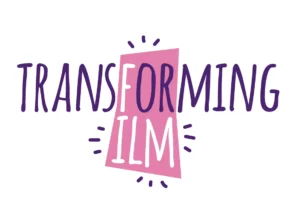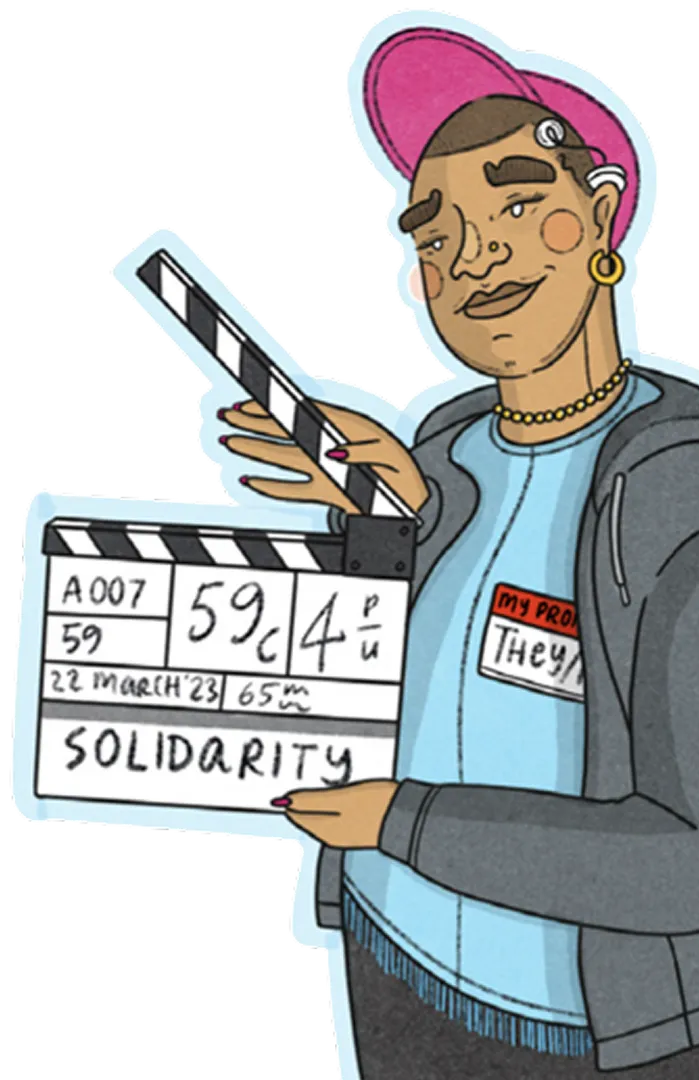Supporting Trans Professionals in the Screen industries
This toolkit is designed to improve the inclusion
and experience of trans professionals working in
the screen industries.
The toolkit contains the following parts:
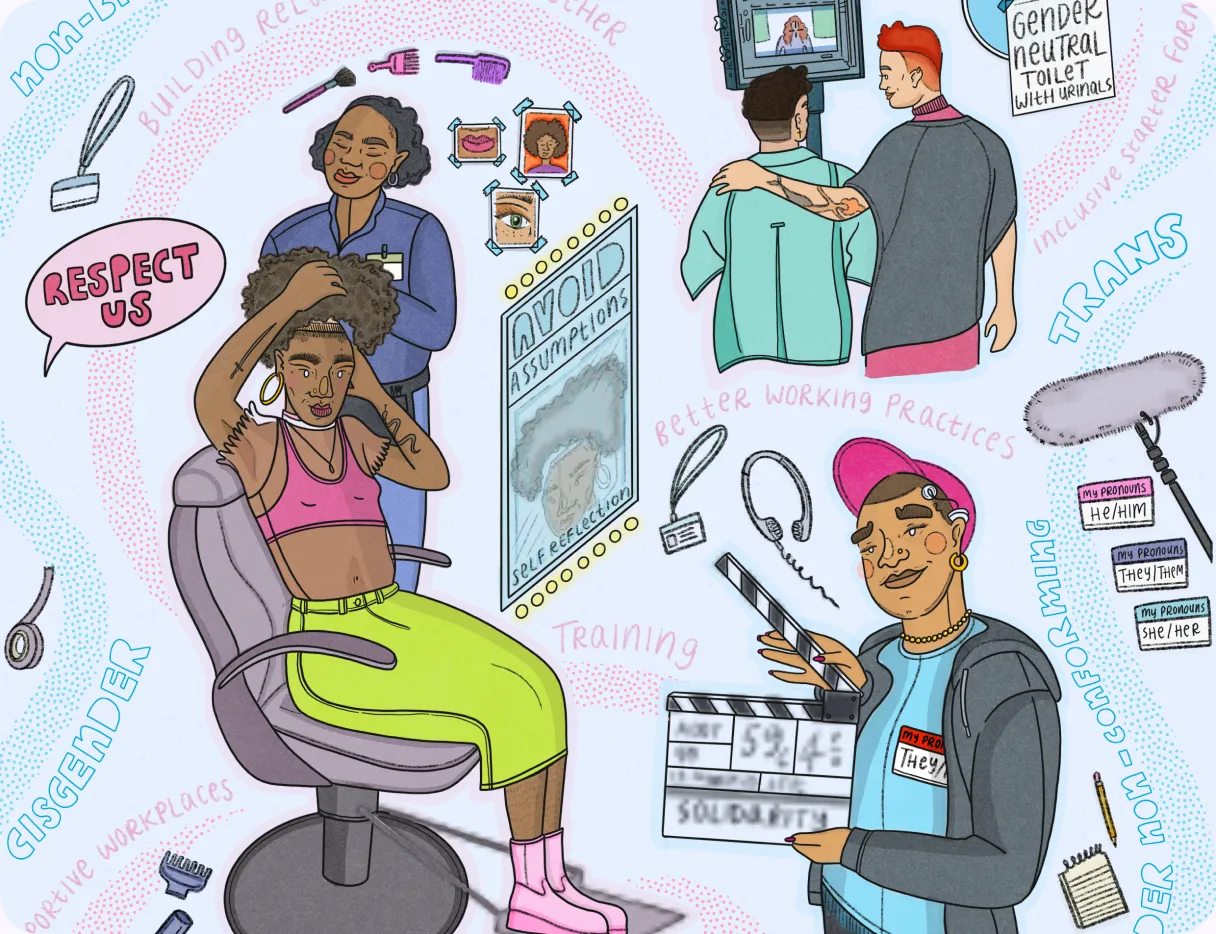
What is this toolkit?
What’s this for?
What’s this for?
This toolkit is designed to improve the inclusion and experience of trans professionals working in the screen industries. What we’ve written is informed by more than five years of work by Transforming Film and years of wisdom from trans professionals working in the industry.
The primary audience is people in the screen industries who want to be supportive to the trans professionals on their teams.
The primary goal is to make the lives of trans people in the industry better. We hope we’ve created something that they will be able to use and share with employers when navigating workplace support as trans people in the industry. We also hope we’ve created an approachable and practical resource for allies – and those who wish to be.
How will this toolkit get us closer to that goal? We provide information, tips and resources on how to actively support trans professionals in your teams. We want to better equip the industries to create inclusive and empowering work environments for trans people.
Disclaimer: The information in the Toolkit is for educational/advisory purposes only. It does not constitute legal advice. Specific professional advice should be sought if production companies need assistance in the interpretation of or deployment of the content set out in the Toolkit.
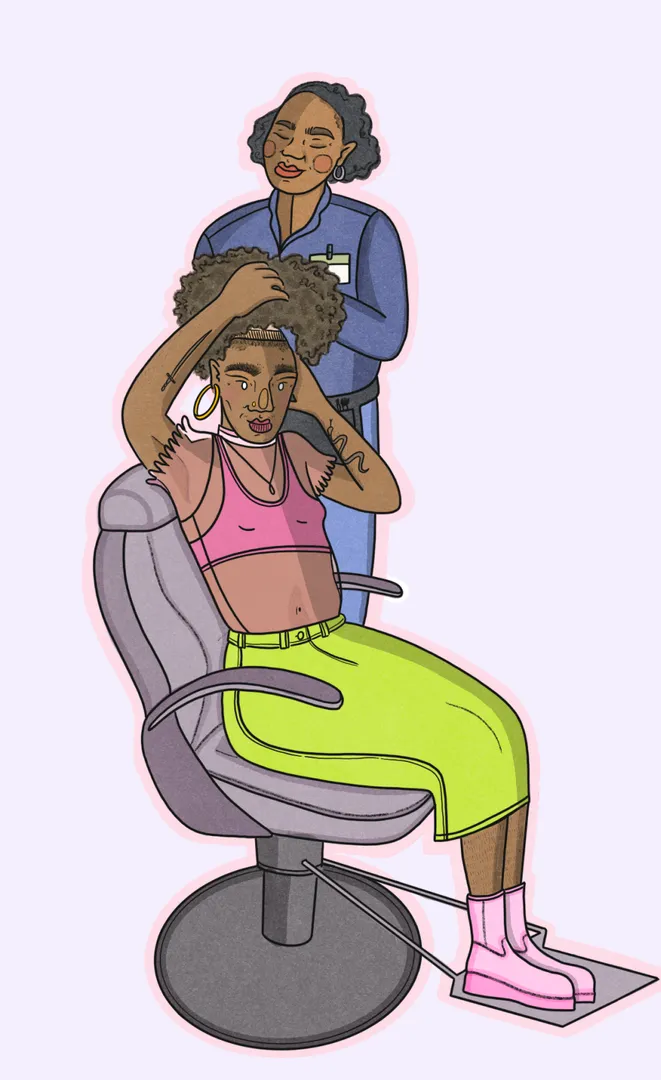
Why do we need to offer support to trans professionals working in the screen industries?
Everyone is entitled to dignity and respect at work
Taking a little time to reflect on how to ensure that trans and non-binary people receive dignity and respect at work is an easy way to support people who may receive little of it in day-to-day life.
Trans and gender non-conforming people already face a lot of violence
Transphobia is the ‘fear or hatred of trans people’, and it is deeply embedded in our society. Trans and non-binary people can face harassment, insults, and violence on a daily basis. This isn’t just ‘unpleasant’ – transphobia kills, sometimes through direct violence and often by unrelenting exclusion and harassment.
We are in a new political period where trans people are being used as a political football in culture wars and right-wing populist narratives.
Because media and narrative are tools that spread transphobia, screen industries have a bigger responsibility than other industries to support trans professionals and shape nuanced depictions of trans stories.
We put ideas and stories about trans people into the mainstream, so it’s imperative that we go above and beyond to tell trans stories well. While the industry has started to create more trans characters and stories, it’s been slow to:
- consider how to develop nuanced and three-dimensional narratives, and
- create positive working conditions for the trans cast, crew, and professionals who work to make these and other stories possible.
Read more about trans representation in the media and film industry.
12%
trans employees have been physically attacked by colleagues or customers in the last year (source ↗)
51%
trans people have hidden their identity at work for fear of discrimination (source ↗)
Sometimes, this discrimination is intentional but often it occurs through ignorance or fear.
In the screen industries, we know there are a lot of people who want to do more for trans people but who are scared – not of trans people, but of ‘getting it wrong’.
You can help reduce the effect of well-intentioned ignorance in the industry. This toolkit will guide you through basic information about gender and the trans experience, and give you practical information on how to build a more inclusive workplace.
Five Top Tips for Busy Filmmakers
Quick Action Guide
Everyone in the screen industries is busy. Here are our top five trans tips to help you disseminate information quickly amongst your teams (they even spell out TRANS so they’re easy to remember).
TRANS:
T – Try
R – Respect
A – Ask
N – Name it
S – Show support
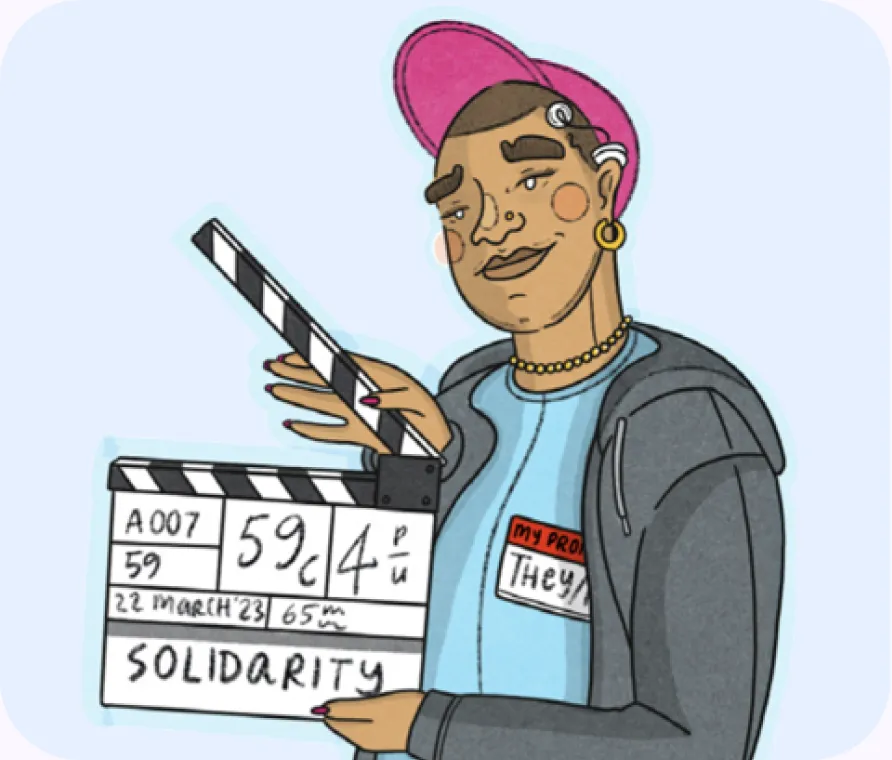
1. Try
The single thing that matters to most trans people is that you are trying, not that you “get it”. You don’t need to understand us to respect us. Most trans people will be forgiving of mistakes when we can see you’re making an effort to get it right (although sometimes we can snap, like anybody else).
2. Respect
We just want dignity and respect – like anybody else. Being trans is often the most boring thing about us!
When people avoid trans folk because they are scared of getting it wrong, or when they treat us like we are fragile, oversensitive snowflakes it dehumanises us and it hurts. Trans people are used to navigating a world where people don’t even respect our humanity, let alone our gender.
Being treated with respect and dignity at work makes a big difference.
3. Ask not assumptions
We all exist in a society that pre-conditions us to make assumptions about each other’s genders. One of the best things we can do to support trans, non-binary and gender non-conforming folks is to create a culture of asking about each other’s pronouns and experiences.
Pronouns are really important to trans folks because they are how the world shows they see, respect and care about a person’s gender identity.
Most people are more than happy to be asked what their pronoun is. Just be polite!
If non-trans people asked each other their pronouns, and told each other their pronouns out loud or in email signatures more, then it would take away the awkwardness of trans and non-binary people having to do it all the time!
4. Name it: Say sorry and move on
We all make mistakes – even trans people. The key to making a mistake is an artful apology. For example, if you get someone’s pronouns wrong: Acknowledge it and correct yourself → say sorry → move on → use it as a learning opportunity not to make the same mistake again
Things to avoid doing:
Ignoring it because you feel awkward This leaves us feeling the pain of being misgendered.
Saying sorry too much (“I’m so so sorry, I really didn’t mean to, please don’t think I’m a bad person”) this puts the onus on us to make you feel better, when you’re the person who hurt our feelings!
Keep misgendering us You might get our pronoun wrong from time to time, but if you consistently do it and say sorry and do it again, it starts to feel like you’re not really trying.
5. Show your support
If we just leave all of the above to individuals then:
1. Trans people don’t necessarily know that you’re a trans inclusive production and;
2. It makes it feel like an interpersonal issue instead of a collective one.
Making your production visibly trans inclusive can include things like: pronouns on name badges and call sheets, inviting people to share pronouns in team huddles, having trans inclusive signage on set (there’s handy print outs at the end of this toolkit!), providing gender neutral facilities, and if you’re feeling really inclusive – trans and nonbinary flags on set!
Practical Advice for productions
Top tips: Development
Top tips: Development
The reality for trans people is stark at the moment. The ‘Trans 101 and Why This Matters’ section in this toolkit offers more information about this.
Anti-trans political bodies, right-wing populism, and mainstream news media collude to propagate horrible narratives about trans people for political gain. The screen industries have a powerful role to play in combatting this through telling three-dimensional stories about trans people that cut through these attacks. Increased interest is being seen in developing trans stories, which is great. But telling these stories well and in ways that treat trans professionals with respect is vital. This starts in development.

01
Common Storytelling Tropes
Consider that trans people’s stories are often told on screen by cis people – sometimes for shock factor, sometimes for cultural reference, and sometimes from a genuinely well-intentioned place. But until very recently they’ve fallen into some specific tropes:
- we are victims and our lives are only bleak and traumatic (Boys Don’t Cry, The Danish Girl)
- we are scary or dangerous, perhaps crazed killers (Silence of the Lambs, Nip/Tuck, CSI)
- being trans is a punchline, ‘shocking reveal’, or a ‘big twist’ (Ace Ventura, The Crying Game, Naked Gun 33⅓)
- a trans person is coming out/coming of age and/or returns to their hometown for the first time after transition (Monica, Close to You)
Watch the documentary Disclosure on Netflix for more understanding on the tropes of trans representations on screen.
GLAAD ‘Victims or Villains: Examining Ten Years of Transgender Images on Television’, GLAAD ‘Where we are on TV’, and BuzzFeed ‘25 Years Of Transphobia In Comedy’ provide additional context on trans representation in media.
These themes are not only deeply damaging to society’s general perceptions of trans people, showing us as scary or fragile, but can also be devastating to trans people’s psyche, especially young trans people who start to believe this is the only possibility for their future.
It’s not that traumatic true stories shouldn’t be told, but we should be mindful of the ecosystem of stories available for and about trans people.
02
Well-rounded trans characters
Rarely are portrayals of trans people more than two-dimensional. Trans people often aren’t afforded the same level of character development as cis/non-trans characters.
Most trans characters from the last 40 years of film and TV:
- focus on ‘being trans’ or ‘being in medical transition’ as the main facet of the characters’ development
- are side characters without agency, used as vehicles for other characters’ story development
- are victims, villains, twists, or punchlines
Read Faefyx Collington’s article ‘The Rise of the Incidentally Trans Character’.
03
Cis Gaze
The cis gaze refers to the way that trans people are depicted in media through the lens of an assumed cis audience. Usually this means that we are portrayed for cis people’s entertainment, scrutiny, or education – you may have heard of the white gaze or the male gaze to denote a similar issue in how Black people and people of colour are depicted, and how women are depicted respectively.
Currently, there’s a tendency from cis people in our industry to want trans stories to ‘educate’ and ‘advocate’. While this comes from a good place and has led to a stark increase in trans representation on screen, it misses out what life is actually like for trans people on a deeper level.
Some questions to ask to avoid falling into this:
- Do we have trans consultants in the right part of development?
- Who is telling this story?
- Why are we telling this story?
- Do we have trans creatives in the process of developing a trans character or story?
04
Characters and Pronouns
Make sure characters are not being misgendered in the story, and consider having pronouns next to their names in scripts/character breakdowns, etc. Teams should be fully briefed where relevant on the gender identities and expressions of characters.
05
Specificity of experience
Many people have shared that they’ve been asked to consult or audition for trans stories that are not relevant to their experience. Productions and casting agents will reach out to trans professionals without considering their trans identity or other identities or experiences. For example, trans men being asked to audition for a part as a trans woman, or white trans people being asked to script consult on a story about a Black trans person. This can feel tokenising at best and often deeply upsetting.
Make sure to get readers and actors with similar lived experiences as the characters in the story to provide feedback when considering projects and stories.
06
Consultants
Be mindful when using consultants for story and script. Consulting on our lived experiences is very different from, for example, a cycling expert consulting on how to authentically depict cycle racing.
Many trans professionals interviewed expressed feeling taken advantage of by productions after being brought onboard as consultants, but then treated as writers who were expected to provide input on the story. The reported being asked for more than is reasonable for a consultant, and then not being credited or paid appropriately for that work.
Ask yourself whether you need a consultant or a writer with the lived experience of those in the story.
This isn’t always straightforward, but as a guide:
- Is the script/project about trans people and trans lives?
- Is the script an ensemble piece (like Sex Education) where there are trans characters and storylines?
A writer is needed.
- Are there trans creatives on the project, but you want to get other trans opinions on the characters and storyline?
- Are there smaller trans characters/storylines and you want guidance or feedback?
A consultant is needed.
07
Trans creatives and trans stories
While it’s important to have trans people in the creative process of developing trans characters and stories, hiring us shouldn’t be limited to only these projects. Some trans writers won’t want to tell trans stories at all. We can and should be hired to tell other stories too.
08
Trans actors in trans roles
While this is an ever-evolving discussion for different identities in film and TV – beyond wanting the industry to develop, hire, and celebrate more trans actors – there is a specific issue in casting cis actors into trans roles: it colludes with wider transphobic narratives in the viewer’s mind that trans people are actors who can ‘take off the make-up and costume at the end of the day’.
09
Trans people beyond junior positions
Another common experience for trans people, including those interviewed with three decades of experience in the industry, is being hired into junior roles on projects to ‘fill the trans perspective’. Don’t do this!
First, it’s obviously insulting!
Secondly, the industry – and creative process – won’t change if our voices are only heard in the most junior positions. Very few trans directors get the opportunity to direct trans stories.
Hire trans creatives or executives. When this really isn’t possible, consider what access trans creatives have to those in power on the project to influence positive outcomes for trans storytelling.
Hire trans creatives or executives. When this really isn’t possible, consider what access trans creatives have to those in power on the project to influence positive outcomes for trans storytelling.
10
Hiring and commitment
‘We couldn’t find any trans people to hire with this experience’ is an often-heard response.
If you find yourself in this situation, follow these three steps:
- Challenge yourself: have you dedicated enough time trying to find trans professionals for roles, including contacting Trans+ On Screen to check their database?
- Explore options for stepping someone up – and consider what is really preventing you from giving people this opportunity.
- Offer shadow roles on your productions so trans creatives get the opportunity to get more experience and upskill. For example, for every Head of Department position, have a shadow person. This can be a good alternative if you really can’t find someone with the right experience level for the project. It’s a great practice industry-wide to be championing development of upcoming talent, and a great way to demonstrate commitment to trans talent and voices while working on a trans story. A word of caution: ensure the roles and decision-making power of the shadow role are clear. For example, the Director has creative control, the Trans Shadow Director will have specific influence on the development of a trans character’s story.
Top tips: Pre production
Top tips: Pre production
Hopefully, you’ve now put a lot of thought through Development into what story you are telling, and how you are telling that story well. You’ve also considered carefully how trans professionals are respected and supported on your production.
Now in pre-production is where you turn your values and intents into reality in every facet of your project.
We all know that there is a lot of urgency and pressure once we are in Production, so doing everything you can in Pre-Production to build a solid foundation for your values will help make good inclusive decisions when under pressure. Doing this work now, will really make it easier later. This means considering both the business side of a production as well as the cultural side – everything from budgeting to pronouns practice.

01
Budget for accessibility and support
This includes:
- A gender identity consultant
- A gender identity advocate for cast
- Putting an extra line in the facilities budget to cover gender neutral toilets at locations which do not have them, so that you can hire/rent them in
- Thinking about facilities that departments such as costume or make up will need, and budgeting for changing rooms or private areas for trans cast to change or have their make up done
- Training for cis crew
- Support once the project is complete – so ensuring you have lines in the budget which consider the fact that trans cast or crew may need support when the project comes out
02
Everyone is different
Trans realities are varied, and not everyone will face things in the same way – each person will have a uniquely different experience across the board. This could be for reasons based on culture, class, race, personality, etc.
It’s also true that different trans experiences are treated differently by society.
For example, trans women structurally have a much harder time than the rest of the community in employment, housing, and other areas of life. In addition, anti-trans rhetoric in the media is usually aimed at trans women, who also experience higher rates of violence. Visibly gender non-conforming people can face more street-level harassment and violence.
It’s important to be mindful not to extrapolate and generalise from a single person’s experience, but to understand the multiple ways transphobia manifests against different trans communities.
03
Training
Offer cis crew training and brief all heads of departments on how to support the trans folk they are working with.
04
Access forms and onboarding
Sending out an accessibility memo before production starts is a great inclusive practice, not just for trans people. This is a survey asking people about their accessibility requirements, rather than their disability/gender status. This is important because it prevents asking people to disclose things that are personal – and at times illegal – to ask for, and it helps give the information actually needed – what support is required – rather than making assumptions. It is also a great indicator to those working on your production of the efforts being made to be inclusive.
For example, you could ask if people have an access requirement around gender-neutral changing rooms.
05
Trans Advocate
Consider hiring a Trans Advocate for your set. A Trans Advocate is there to support and advocate for the trans professionals you’re working with. Trans professionals often report that not only are they expected to do their actual job, but they’re also expected to be the voice on ‘all things trans’, the person who speaks up for other trans people on set, and the educator for cis people on trans experiences. Hiring a Trans Advocate ensures this doesn’t happen. This is a new role, and like Wellbeing Facilitators and Access Coordinators, it is becoming increasingly common on sets. Transforming Film is working on how the industry can support this role and ensure it works with, not in competition with, other advocacy roles.
Please contact us for more information if you’re interested in hiring a Trans Advocate for your production.
06
Hire practice
Ensure you’re employing the right people for the job/to tell this specific story.
Build inclusivity into your hiring practice by asking all departments to ensure there’s representation behind the camera and creating a hiring statement of intent.
Don’t rely on consultants – actively include people in positions, preferably decision-making roles.
07
Pronouns
Include pronouns on your paperwork for productions – on your unit lists and call sheets (see Templates).
Encourage introducing pronouns at the start of meetings and on calls as well, including your read-throughs and production meetings.
08
Starter Forms
Send out gender-inclusive start forms – which include asking for people’s pronouns.
09
Travel Safety
Travelling while trans comes with more risk considerations than travelling as a cis person, so you should do a risk assessment.
Whether for a shoot, a film festival, or a press tour, consider:
- Is being trans legal where you are going?
- Are trans people safe where you are going?
- Are a person’s gender markers on their passport going to make it difficult – or impossible – for them to travel with you?
- Is the person able to travel with their medication?
Some possible risk mitigation strategies:
- Provide added levels of safety or security
- Consider travel companions, personal taxis to avoid public spaces, tracking apps – with consent! – and ‘check ins’ to ensure safe travel
- Collect embassy details in advance
Addressing this risk assessment:
Be careful in your tone: avoid making the person feel like they’re a burden or that this is extra work for you.
Do research: ensure you aren’t asking someone to put themselves at risk of harassment, violence, or arrest!
Present the information: don’t make decisions for the trans person or assumptions about what we might need. Sharing your research will demonstrate that you’re taking safety seriously. Talk through the risks and your proposed risk-mitigation strategies for them to have input and agency about the situation.
10
Statement of Intent
Consider creating a Statement of Intent or Charter to be signed by the Head of Departments, crew, and cast when joining the project. This makes it clear that the production being run is inclusive and sets clear intentions for yourself and your team.
Trans people beyond junior positions
Another common experience for trans people, including those interviewed with three decades of experience in the industry, is being hired into junior roles on projects to ‘fill the trans perspective’. Don’t do this!
First, it’s obviously insulting!
Secondly, the industry – and creative process – won’t change if our voices are only heard in the most junior positions. Very few trans directors get the opportunity to direct trans stories.
Hire trans creatives or executives. When this really isn’t possible, consider what access trans creatives have to those in power on the project to influence positive outcomes for trans storytelling.
This tip should also be considered throughout the process
Hiring and commitment
Remember when under pressure your hiring commitment and statement of intent from Development.
‘We couldn’t find any trans people to hire with this experience’ is an often-heard response.
If you find yourself in this situation, follow these three steps:
Offer shadow roles on your productions so trans creatives get the opportunity to get more experience and upskill. For example, for every Head of Department position, have a shadow person. This can be a good alternative if you really can’t find someone with the right experience level for the project. It’s a great practice industry-wide to be championing development of upcoming talent, and a great way to demonstrate commitment to trans talent and voices while working on a trans story. A word of caution: ensure the roles and decision-making power of the shadow role are clear. For example, the Director has creative control, the Trans Shadow Director will have specific influence on the development of a trans character’s story.
Challenge yourself: have you dedicated enough time trying to find trans professionals for roles, including contacting Trans+ On Screen to check their database?
Explore options for stepping someone up – and consider what is really preventing you from giving people this opportunity.
‘We couldn’t find any trans people to hire with this experience’ is an often-heard response. If you find yourself in this situation, follow these three steps: Offer shadow roles on your productions so trans creatives get the opportunity to get more experience and upskill. For example, for every Head of Department position, have a shadow person. This can be a good alternative if you really can’t find someone with the right experience level for the project. It’s a great practice industry-wide to be championing development of upcoming talent, and a great way to demonstrate commitment to trans talent and voices while working on a trans story. A word of caution: ensure the roles and decision-mak…
This tip should also be considered throughout the process
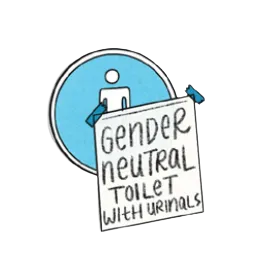
Remember…
Trans people might be working on your production without you knowing.
Top tips: Production
Top tips: Production
So you’ve done all your prep and all best intentions are set to be a truly inclusive and supportive work environment for trans people.
Now Production is taking off and everything is moving at light speed. This is where, with all the will in the world, things will likely go wrong at times.
That’s okay – remember, the aim of inclusive practice is not that we are always perfect, but that we are driven by our values when we meet challenges, and demonstrate to our trans colleagues that we are trying hard to break down the barriers to trans inclusion. The main goal of the tips in Production are to function as reminders that help us grounded in our values and purpose as we navigated the challenges of a demanding and fast paced sector.
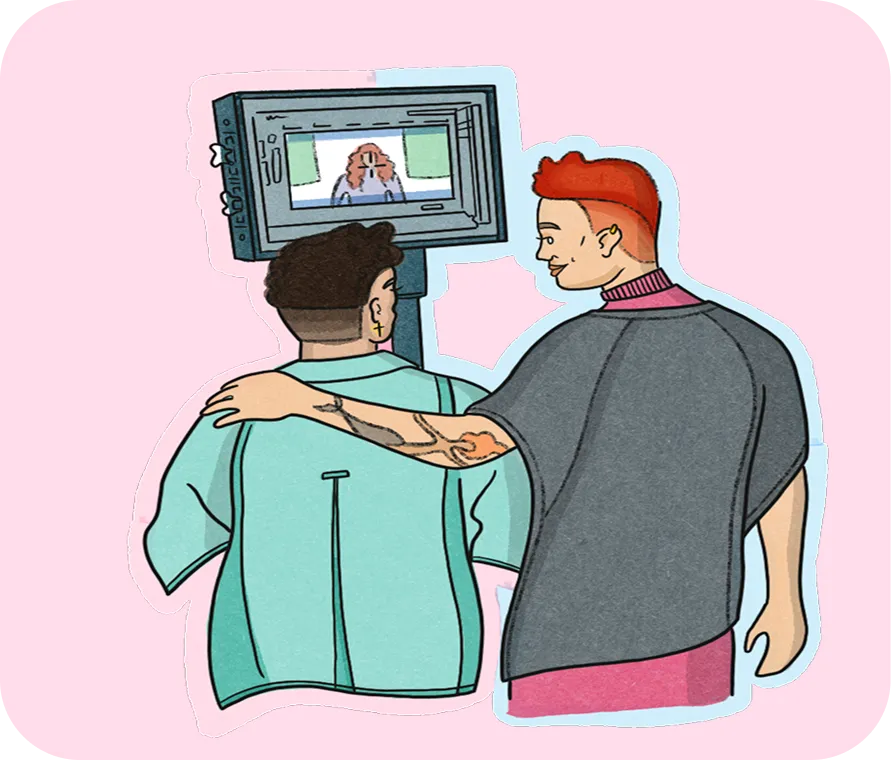
01
Company policies and guidelines
Make sure there are clear guidelines for all around your production ethos and what you expect from people working with you – be explicit that your production is trans-inclusive and won’t tolerate transphobia. Go one step further and put these policies or a trans inclusion statement in the public domain. This is a great way to signal that you are trying to be a ‘safe space’ and that you support trans and non-binary people.Ensure you share a clear policy and procedure for all around complaints or discrimination – this does not need to be about ‘cancelling’ – but about ‘learning’.
See an example Statement of Intent in our Templates section.
02
Adaptability
Be prepared to need to change things. We can’t always get it right, so be prepared to change things that aren’t working, or adapt when people let you know something has gone wrong. Sometimes even a tiny change can make a huge difference – for example, creating DIY gender-neutral signs for a location that has gendered toilets.
03
Virtue signalling
Be aware of virtue signalling – it’s great that you want to ensure trans people are safe on your set or in your workplace. However, don’t make this about you.
For example, you don’t need to tell a trans person with whom you are working that you corrected someone who had misgendered them.
04
Pronoun circle
Some productions find it useful to include a cast and crew introduction/pronoun circle at the start of each day or week of shooting – this helps remind everyone to do their best regarding pronouns, with the added benefit of helping familiarise everyone with each other’s names and roles on set.
Remember to keep including pronouns on paperwork.
05
Budgets
As production starts and budgets adjust, ensure that you don’t lose sight of your values and statement of intent when under pressure.
Often with budgets being squeezed, the first thing to be cut is training and inclusive practice.
Everyone is different
Trans realities are varied, and not everyone will face things in the same way – each person will have a uniquely different experience across the board. This could be for reasons based on culture, class, race, personality, etc.
It’s also true that different trans experiences are treated differently by society.
For example, trans women structurally have a much harder time than the rest of the community in employment, housing, and other areas of life. In addition, anti-trans rhetoric in the media is usually aimed at trans women, who also experience higher rates of violence. Visibly gender non-conforming people can face more street-level harassment and violence.
It’s important to be mindful not to extrapolate and generalise from a single person’s experience, but to understand the multiple ways transphobia manifests against different trans communities.
This tip should also be considered throughout the process
Training
Offer cis crew training and brief all heads of departments on how to support the trans folk they are working with.
This tip should also be considered throughout the process
Trans Advocate
Consider hiring a Trans Advocate for your set. A Trans Advocate is there to support and advocate for the trans professionals you’re working with. Trans professionals often report that not only are they expected to do their actual job, but they’re also expected to be the voice on ‘all things trans’, the person who speaks up for other trans people on set, and the educator for cis people on trans experiences. Hiring a Trans Advocate ensures this doesn’t happen. This is a new role, and like Wellbeing Facilitators and Access Coordinators, it is becoming increasingly common on sets. Transforming Film is working on how the industry can support this role and ensure it works with, not in competition with, other advocacy roles.
Please contact us for more information if you’re interested in hiring a Trans Advocate for your production.
This tip should also be considered throughout the process
Consultants
Be mindful when using consultants for story and script. Consulting on our lived experiences is very different from, for example, a cycling expert consulting on how to authentically depict cycle racing.
Many trans professionals interviewed expressed feeling taken advantage of by productions after being brought onboard as consultants, but then treated as writers who were expected to provide input on the story. The reported being asked for more than is reasonable for a consultant, and then not being credited or paid appropriately for that work.
Ask yourself whether you need a consultant or a writer with the lived experience of those in the story.
This isn’t always straightforward, but as a guide:
- Is the script/project about trans people and trans lives?
- Is the script an ensemble piece (like Sex Education) where there are trans characters and storylines?
A writer is needed.
- Are there trans creatives on the project, but you want to get other trans opinions on the characters and storyline?
- Are there smaller trans characters/storylines and you want guidance or feedback?
A consultant is needed.
This tip should also be considered throughout the process
Top tips: Post-Production
Top tips: Post-Production
Post-Production is where many inclusive practices go to die. For some reason, people often forget to include their inclusive practices once Production has ended.
But, there’s as much chance of doing harm to trans professionals here than anywhere else. It’s important to ensure that you remember you may have trans colleagues in Post-Production who need just as much inclusion as anyone else, so including training and Statement of Intent for these team members is equally important.
This is also a great moment in a project to reflect and learn from everything you’ve implemented thus far.
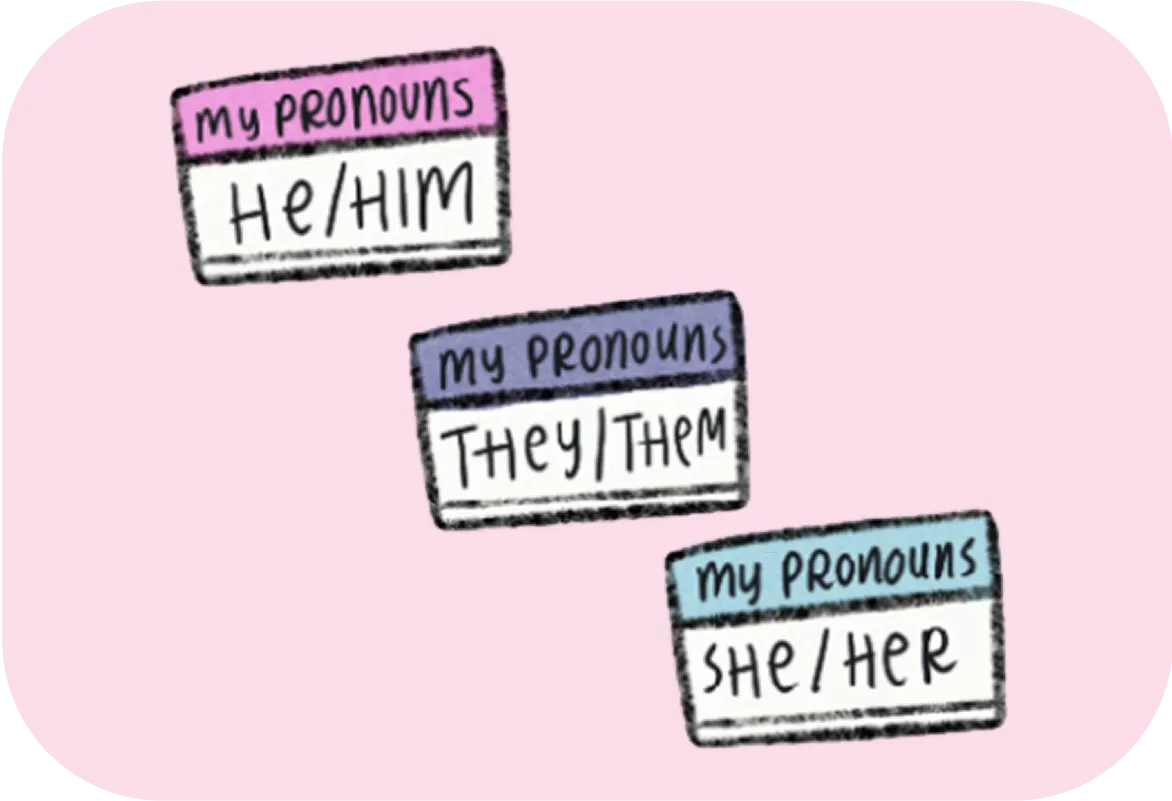
01
Training for post team
Remember that perceptions are generated in the edit as much as in the writing or production. Include your post team in any trans-inclusion training, and ensure that they have signed up to your Statement of Intent.
02
Debriefs and check-outs
Debrief/check out with crew and cast as they depart the production. The goal here should be:
- Finding out how trans cast and crew felt: what worked well for them, what could be improved in future?
- Finding out how cis cast and crew felt: what resources or practices did they find useful? Did they have enough support? Did they know who they could go to with questions?
03
Aftercare
Build in support and aftercare for trans and non-binary cast when the production comes out.
Sometimes the media storm after release is the hardest part for trans and non-binary people in the public eye.
Ensure that you’ve provided good press support, media training and emotional support services on hand. Consider possible transphobic responses, trolling and harassment and have a plan of action on how to respond, as well as to support your cast and crew well. See more in our Distribution section for how to do this well.
04
Reflection
Reflect on learning and create an action plan for your next project:
- What went well?
- What could you have done better?
- What didn’t go to plan?
- What factors got in the way of you implementing everything you intended?
- What learnings will you take forward?
You don’t always know someone is trans
This is important to remember at all stages of a project: you might not know that someone you are speaking to is trans, so speak about trans people and the project in a way that affords us respect and dignity.
There is a myth that ‘you can always tell’ that somebody is trans, which is simply untrue. Many trans people report others saying hurtful things about trans people to them, or in proximity to them, assuming that they are cis.
You may also be working with trans people who have not yet come out – ask yourself, do you want to be seen as safe and supportive, or someone that makes them feel bad about who they are?
Anecdotally, we know that there is a high number of trans people working in post-production – because you can work from home where it feels safer and easier not to ‘come out’.
Don’t forget: EDI Forms…
EDI forms are often non-negotiable and required as part of a production – however, they can often use language or ask for information that is unnecessary, which can cause anxiety and distress.
Here are some tips when navigating this:

✓
Ask yourself what data is really needed and why. People will often send out an EDI monitoring form without a clear purpose, which can leave people feeling unsure why they are sharing personal data. It’s therefore good to consider carefully if and how you will use this data.
✓
The next step is to explain this “why” in the form. If you want people to share personal information it’s good practice to let them know what developments or practices this data will be informing. Especially as trans people may be sharing especially vulnerable information, or even outing ourselves.
✓
It’s good practice to offer an “open text” answer box to questions about a person’s identity, instead of a list of pre-prescribed options. Sometimes you might want to offer some standardised answers, in this case give a large breadth of options, including one for free text where people can self-describe.
✓
Ensure you give a way for people to ask questions about the form and its questions.
✓
If the EDI form you have been given by a financier or commissioner isn’t right – feed this back and request alterations before you send it out to your team.
For further support
Transforming Film can provide consultancy around this area – and many others in this toolkit. If you would like further support, please contact us on info@transformingfilm.com
Top tips: Distribution
Top tips: Distribution
The shooting is finalised, you got through post-production, and now the project is heading out into the world.
Perhaps you’re working with a distributor, or perhaps you’re preparing for a festival run where you’ll be doing most of the leg work.
Either way, ensure you think about the trans people with whom you’ve worked and are working in this phase of the project.
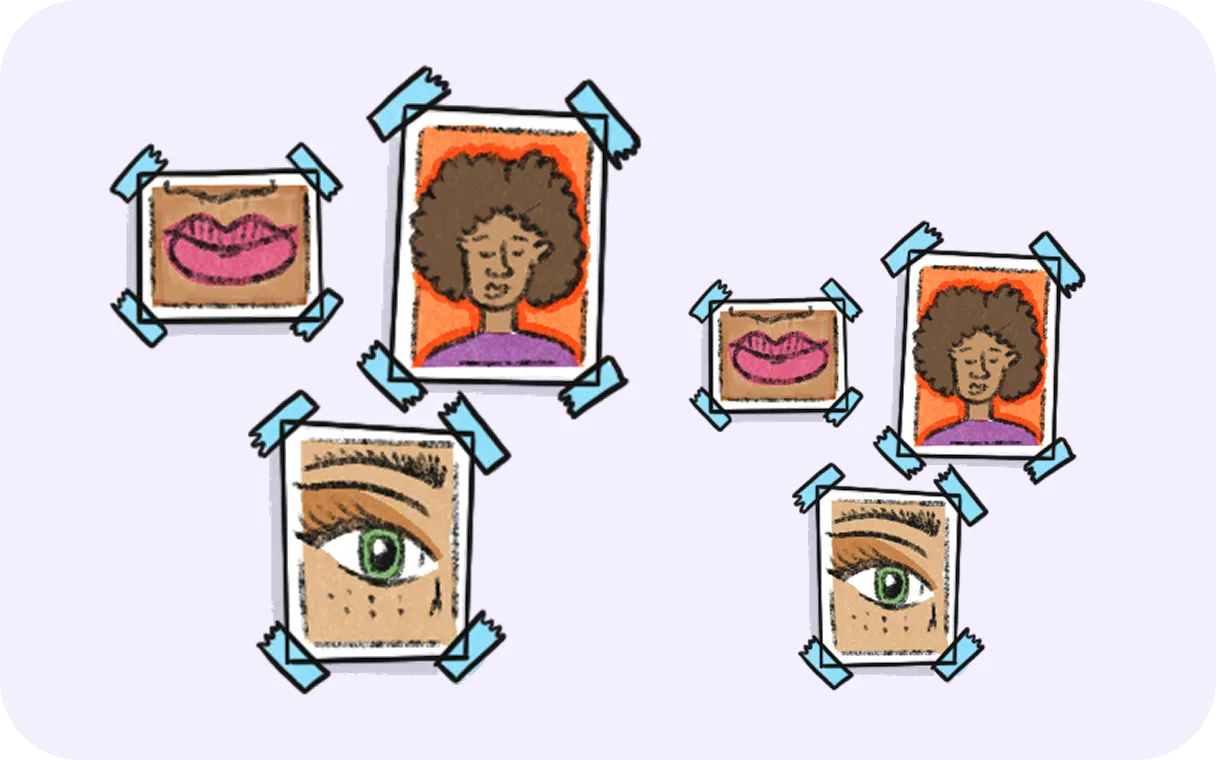
01
How will you look after the trans people with whom you’re working when your project is released?
This is important for all crew but is particularly important for cast, contributors, writers, directors, and producers. The world is currently an incredibly hostile place for trans communities – therefore, planning how you will support trans people during the release of the project is extremely important.
02
Create a one-page distribution document for your project, which travels with it as it moves through distribution.
This could outline the key messages of the film and takeaways, how you have approached making the project so far, FAQs that might get asked of the film with preferred answers, any key language or facts people should be aware of, and relevant contacts for the project’s team.
This can be a good way of outlining what you expect from the other teams that will be working with your project and gives them helpful context and information. Share with festivals, press and publicity teams, and distributors.
03
Communicate with the cast, contributors, and crew about the release of your project.
Outline what might happen when the project is released and what support will be in place. Ask if they have any concerns or questions around this.
This is particularly important for team members who may not have made a film or screen project before or younger cast/contributors.
04
Who do trans professionals go to should there be an issue during distribution?
Think about having an external neutral party for trans people to take concerns, issues, or questions to during distribution. This should not be the director or producer, but someone who is neutral. For example, a trans advocate or external wellbeing facilitator.
05
Has everyone been trained appropriately?
Training provisions are often put into the preparation period of a project and the teams that come later in the pipeline are neglected. Ensure PR, marketing, and distribution are trans-inclusive and aware of appropriate language and support that may be needed when working with your project.
06
Ensuring trans people are respected through the distribution phases
Small but important details are often forgotten in distribution. Has the interviewer been given the cast’s pronouns? Is the hotel that’s been booked for a press event supportive and safe for trans people?
07
Social media and online engagement
Consider how you will support team members online when the project is released. Create a social media strategy with guidelines on what happens should there be negative or abusive reactions – bearing in mind that you also don’t want to scare people. Give guidance on how people can use and protect their social media and online presence – for example, making accounts private, limiting comments, and reviewing privacy settings.
08
Trans creatives don’t need to only tell trans stories
Just because a writer is trans doesn’t mean they want to tell trans stories. Trans people should be allowed to tell other stories too.
Top tips: Business affairs and accounts
Top tips: Business affairs & accounts
Sometimes productions stumble in their care for trans cast and crew at the point when they aren’t on set, especially around business affairs and accounts.
Contracting and accounting usually require proof of identity and personal information. This can be very stressful and exposing for trans people who might not have changed legal gender markers or who go by a different name to their legal name – sometimes referred to by trans people as a deadname.
Transforming Film can provide consultancy around this area – and many others in this toolkit. If you would like further support, please contact us on info@transformingfilm.com

Things to think about when dealing with business affairs and accounting departments
✓
Remember that the legal side of things can be the scariest part of a project for trans people.
✓
Think about what you actually need to collect legally from people.
✓
Think about who needs to see any personal information collected about crew or cast. Minimise this number where ever possible.
✓
Don’t leave the business affairs or accounts side of things to the last minute – this needs to be built onto the process of care for cast and crew.
✓
Provide training for business affairs and accounting teams.
✓
If a trans person has a legal name which is different to their actual name, ensure their legal name is kept private and confidential.
How to support the trans people you’re working with through the accounts and legal procedures
✓
Let them know what accounting and legal processes you need to happen, so no one is caught of guard.
✓
Acknowledge that there could be parts of the process that could be difficult for the trans folk you’re working with.
✓
If you do require sensitive information, explain why it’s necessary and who will have access to.
✓
If needed, offer support as they liaise with business affairs and accounts.
✓
Be an advocate for them to those departments if needed.
Everyone has the right for their personal information to be kept safe by organisations they talk to. On top of that, trans people have extra legal protections if they have applied for a Gender Recognition Certificate (GRC) to get the law to recognise their gender.
Not all trans folk will have applied for a GRC, and so it’s important to remember that regardless of this, everyone should be treated with respect and this includes using the name that a person asks you to use and keeping a person’s information safe — so not sharing information without that person’s consent.
Galop provide an information sheet with further guidance on this here ↗.
Key departments
Hair & Makeup – Department Tips
For many Trans people, gender presentation and affirmation can be sensitive and important elements of our experience.
Hair and makeup can be integral parts of trans people’s lives particularly in learning how to masculinise or feminise our appearance, to minimise gender dysphoria and maximise gender affirmation. There are countless social media accounts and posts for and by trans people on the artistry of hair and makeup because it’s such a central part of our experience, especially trans women and femmes.
Because the hair and makeup industry itself is also very gendered in society, the very experience of being in a hair and makeup setting can create a lot of anxiety for trans people about how they will be treated.
We therefore want to support hair and makeup artists on set to be supported in providing affirming services.

Common pitfalls
01
Pitfall: Assumptions
Assumptions about someone’s gender or desired gender expression can really affect a trans person’s experience, and mental health, on a set (for example, assuming that someone you are reading as a woman/feminine wants a feminising approach to makeup, or that someone you read as a man/masculine would want a minimal or masculinising approach).
02
Pitfall: Skills gap
Trans people often share stories about experiences with hair and make-up artists who haven’t necessarily developed the skills needed to do their hair and make-up well. This could be because of gaps in masculinising and feminising make-up techniques, or because some artists don’t know how to work with different skin tones.
03
Pitfall: The art matters more than the person
We sometimes hear “it’s about the character, not the actor”. But it’s important to remember that talent and contributors are humans worthy of dignity first and foremost. In our experience, an actor or contributor will do their best work when they feel safe and comfortable in themselves.
04
Pitfall: Assuming people will know your a safe space
The anxiety about hair and makeup can start for a trans person long before they walk in your door and meet you. With all the good intentions and passionate allyship in the world, people won’t know that you’ve thought about their needs unless you tell them. Negative previous experiences in the world mean we might walk into your room nervous, anxious or even scared.
What to do about it…
01
Tip: Don’t make assumptions, ask everyone:
This sounds easy, but we all make subconscious assumptions about each other all the time. Challenge yourself when working with talent or contributors to not assume how somebody wants to feel or be seen. The best way to do this is to ask everyone who sits in your chair what they are going for and how they want to feel. This will benefit non-trans people as well as trans people.
02
Tip: Develop your practice
The industry is full of skilled and passionate hair and make-up professionals who want to make people feel wonderful and do excellent work. However, because we live in a society with biases such as those around gender or race, specific skills and knowledge often need to be developed for working with different people. This isn’t because trans people or racialised people have ‘hard to meet’ needs. It’s because these industries – and society – have historically not been developed to cater to people outside of white, light-skinned, or cis beauty standards, which is often linked to who an industry can make the most money from. As the goal is to be an inclusive industry that treats all people with dignity and respect, it’s beneficial to develop skills beyond the ‘standard’ set. There are hundreds of thousands of social media accounts and posts with information on inclusive and affirming hair and make-up practices, so it doesn’t need to be costly.
03
Tip: Place dignity at the centre of everything we do
The industry is full of skilled and passionate hair and make-up professionals who want to make people feel wonderful and do excellent work. However, because we live in a society with biases such as those around gender or race, specific skills and knowledge often need to be developed for working with different people. This isn’t because trans people or racialised people have ‘hard to meet’ needs. It’s because these industries – and society – have historically not been developed to cater to people outside of white, light-skinned, or cis beauty standards, which is often linked to who an industry can make the most money from. As the goal is to be an inclusive industry that treats all people with dignity and respect, it’s beneficial to develop skills beyond the ‘standard’ set. There are hundreds of thousands of social media accounts and posts with information on inclusive and affirming hair and make-up practices, so it doesn’t need to be costly.
04
Tip: Let us know you’ve thought about us
If there’s a way to indicate before folks even come into the room that you’re a trans /LGBTQ+ aware hair and makeup team that’s ideal. We recognise this is not always possible on a fast moving production, so creating visual queues to people that they are with people who’ve thought about them can help – having visibly queer and trans members of your teams, hanging pride/trans flags and so on.
Also, consider going the extra mile to welcome someone: asking them what they need to feel comfortable and listening to them makes all the difference.
A note of clarification here: this doesn’t mean that you should make a big deal out of someone being trans, just being warm, welcoming and asking open ended questions to help them feel safer in your chair.
Costume
For many Trans people, gender presentation and affirmation can be sensitive and important elements of our experience.
Clothes can be integral parts of trans people’s lives particularly in learning how to shape our body in ways that minimise gender dysphoria and maximise gender affirmation.
The fabric, colour or cut of clothes can accentuate or minimise different parts of our bodies, which can be very important for trans folks who want to masculinise, feminise, gender or de-gender their appearances.
Having people interact with our bodies, and losing agency of how we are shaped, touched or our bodies accentuated can be a real cause of anxiety for trans people, and has the potential to cause significant mental distress.
We therefore want to support costume departments to be supported in providing affirming services.
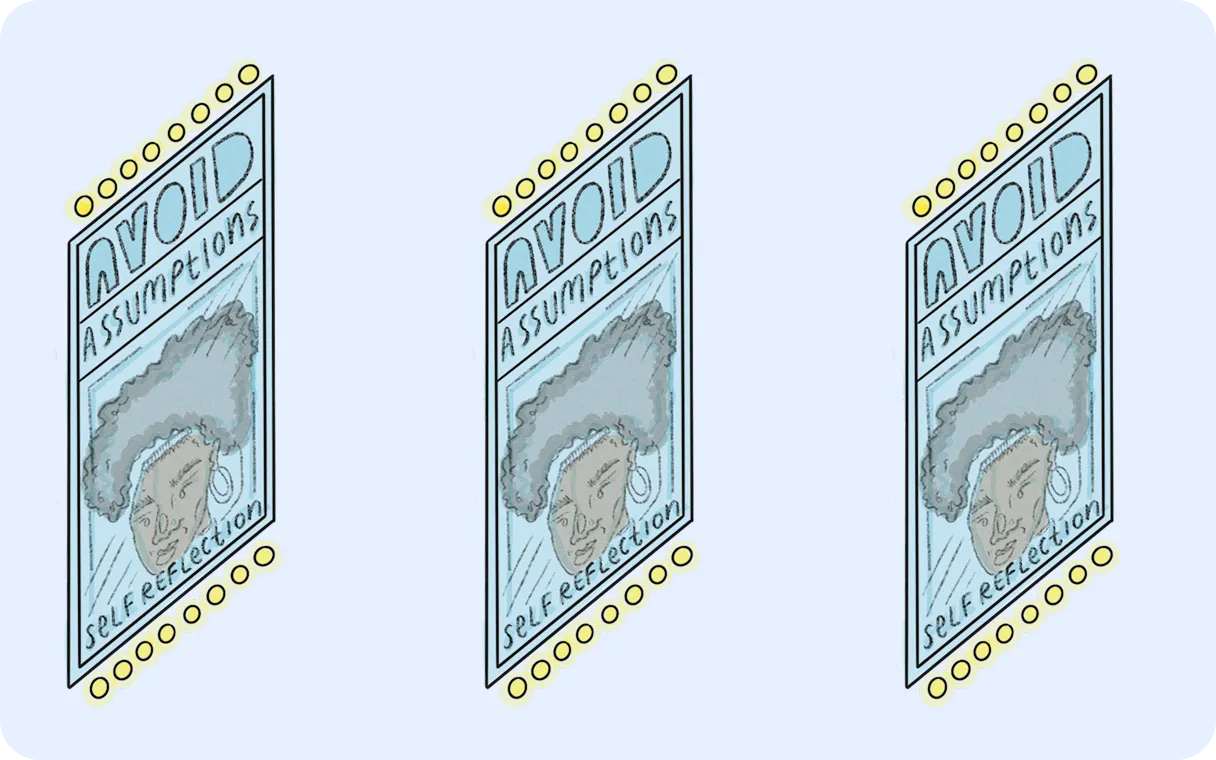
Common pitfalls
01
Pitfall: Not being sensitive to someone’s body image
The screen industries are famous for damaging people’s self-confidence and body image. Whilst it’s true that this isn’t unique to trans people, there are ways that this uniquely impacts trans people on sets. Many trans people don’t fit the ‘average’ or ‘standard’ range of clothing for their gender. For example, men’s shoe sizes often start at a size 6 in the UK and women’s often end at a size 9. Men’s clothes off the peg have broad shoulders and slim hips, and women’s have narrow shoulders and wide hips.
02
Pitfall: The art matters more than the person
We sometimes hear “it’s about the character, not the actor”. But it’s important to remember that talent and contributors are humans worthy of dignity first and foremost. In our experience, an actor or contributor will do their best work when they feel safe and comfortable in themselves.
03
Pitfall: Unclear safe space
For a trans person, apprehension about costume can start long before walking through your door and meeting you. Even with all the good intentions and passionate allyship in the world, trans people won’t know that you’ve thought about our needs unless that is explicitly said. Negative previous experiences mean trans people might walk into your room nervous, anxious, or even scared.
What to do about it…
01
Tip: Prepare for the unexpected
Collect sizing in advance where possible to ensure the best array of options is available. Seek out clothing and brands outside of your usual suppliers – including trans-specific tailoring brands – and be prepared for alterations and adjustments on site.
Most importantly, consider the impact of your words – don’t make a trans person feel like they’re an inconvenience, and avoid commenting on their body in ways that may trigger body dysphoria.
This is good practice that benefits everyone – rarely do people appreciate strangers commenting that their feet are too big or small, shoulders too narrow or broad, or hips too small or wide.
02
Tip: Place dignity at the centre of everything we do
Again this sounds easy, but we’ve worked on countless sets where the pressure and demands are so great that many workers aren’t treated with dignity. This is as true of how we’ve seen costume team members be treated as it is of any other department. Industries are changed when we change our behaviours, and so remembering to take a breath and see the person in front of you for their full self, and create an affirming and caring environment when we are working on someone’s appearance (and in close proximity with their body) can transform the culture on a set.
03
Tip: Let trans people know
If there’s a way to indicate that your costume team is trans/LGBTQIA+ aware before people even go into the room, that would be ideal. While this isn’t always possible on a fast-moving production, creating visual cues can help trans people know your team is a safe space – having visibly queer and trans members of your teams, hanging pride/trans flags, and so on.
Consider going the extra mile to welcome someone – asking what they need to feel comfortable and listening can make all the difference.
A note of clarification: this doesn’t mean that you should make a big deal out of someone being trans – just be warm, welcoming, and ask open-ended questions to help trans people feel safer in your department..
Facilities and Suppliers
In our industry there’s a tendency to focus on what’s happening on-set and forget about the many other moving parts off-set and in the wider community. This often means that the teams and services which we might not directly see or which are hired in, don’t get the same briefing or training on company ethos and expectations. Without this, suppliers and external teams don’t have the same support and often this is where productions fall down and trans people (and others) can be made to feel uncomfortable or worse, unsafe.
Facilities and Suppliers could be facilities companies, security companies, caterers, craft services, accommodation providers, transport companies and drivers, the list goes on!
It’s important to ensure all of these teams and providers are supported in providing trans inclusive services.
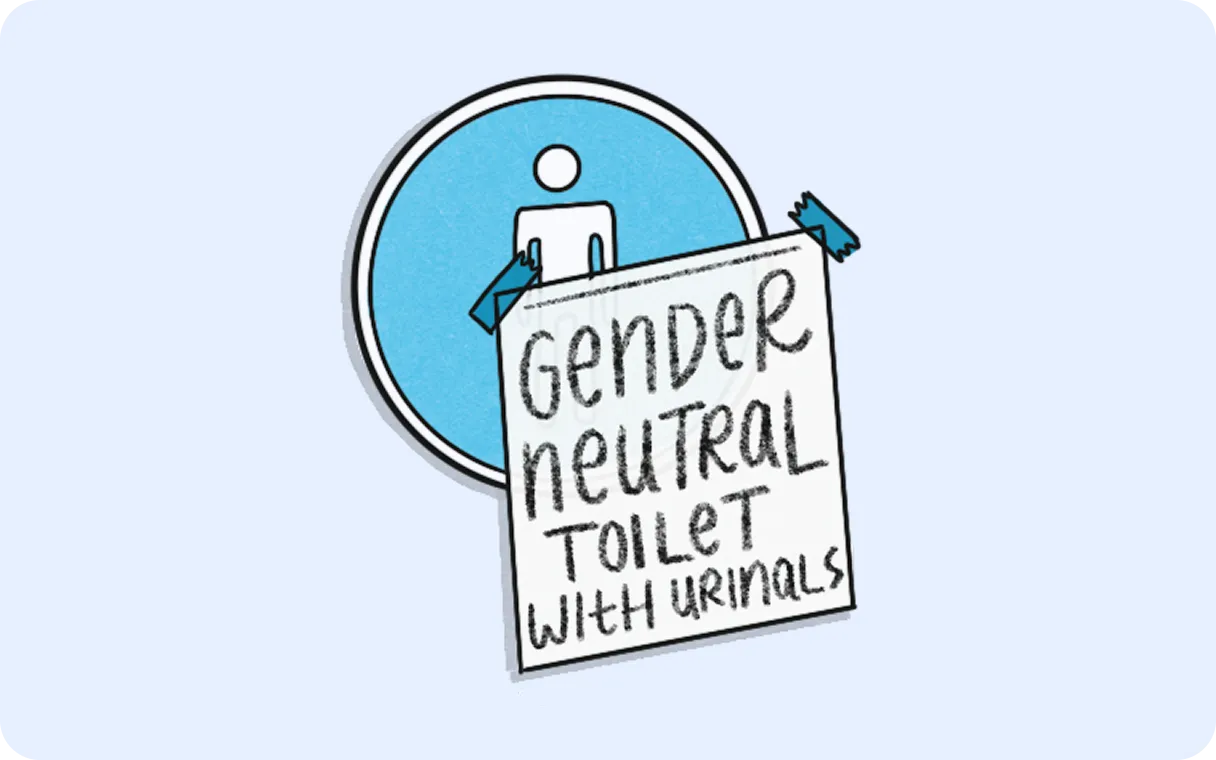
Common pitfalls
01
Pitfall: Suppliers and Facilities not being included in training or briefings.
02
Pitfall: Suppliers misgender trans professionals
One of the places we often see productions fall down, is when suppliers and facilities misgender people. For example, an accommodation provider misgendering guests on their hotel paperwork.
03
Gendered Facilities
It’s really common for productions or companies to have gendered facilities, even when this isn’t a legal requirement. (See more about the legal side of things here ↗)
For example, when planning crowd changing facilities it’s common for these to be gendered, despite the facilities provided being individual identical stalls which could just be gender neutral.
Make Up and Costume trucks are not gendered, so why should other facilities we use be gendered?
What to do about it…
01
Tip: Firstly ask suppliers and facilities if they are trans-inclusive and what they have in place to support trans people.
For example, when hiring honeywagons, who can provide you with non-gendered separate cubicles. When booking accommodation, ensure they are trans-inclusive and will be a safe place for trans team members. Ensure that you are including teams and providers in any training provided, and send them production or company memos which outline your commitment to trans folk and your expectations of anyone working with you.
02
Tip: Have proactive conversations about gender with suppliers in prep.
Speak to suppliers in advance and check if they’re trans-inclusive. Reiterate that there are people of all genders on your team, and ask that suppliers don’t assume gender and share resources, particularly around pronouns.
03
Tip: Ensure that you think about facilities and what’s needed in the planning and budgeting phase.
Don’t go with the status quo, ask for what you need. Most facilities providers offer honeywagons which are six individual stalls rather than gendered male and female stalls. These are great as not only are they gender neutral but if you have children on set, individual stalls can be allocated for under 16s use, rather than having to hire a separate honeywagon.
Case Study: Mars – Short Film
About Mars
Mars is an original short film created by British award-winning music artist Yungblud (Dominic Harrison) and written by award-winning playwright Chris Bush. Shot in November 2022, the film was directed by Abel Rubinstein and went on to premiere at London Film Festival and Toronto International Film Festival, before being longlisted for best short at the British Independent Film Awards in 2023.
A frank and funny story of self-discovery set in the north of England, the short film follows a day in the life of Charlie Acaster. All Charlie has ever wanted is a regular teenage existence – at least that’s what she thinks. Now one extraordinary night makes her reassess what truly matters.
When Transforming Film co-founder Cat Marshall was approached to produce Mars, the team knew this was a brilliant opportunity to test out much of their best practice advice, as well as include a Trans Advocate role on set.
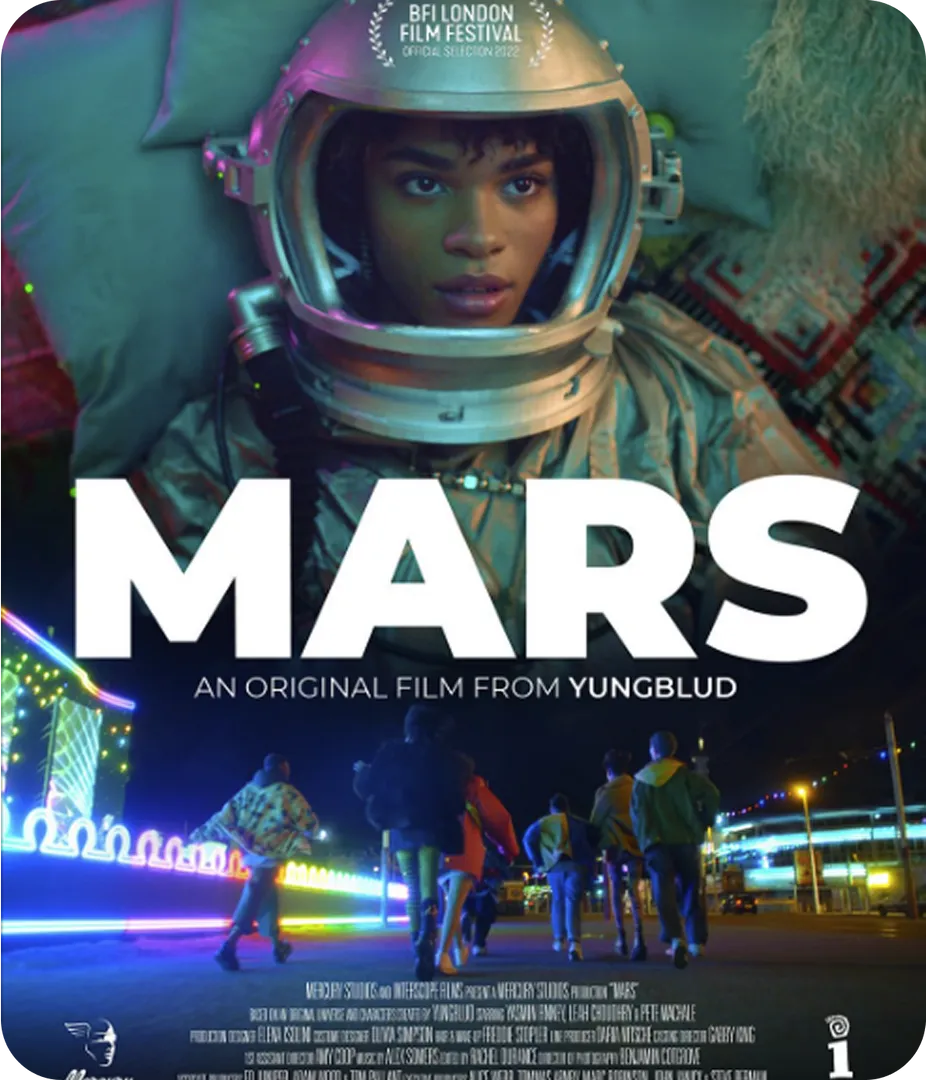
What did the mars team implement?
Development/Pre-Production
Trans Advocate
Transforming Film co-founder Nim Ralph was hired as Trans Advocate on the film and started preparation with the team.
Statement of Intent
A ‘Statement of Intent’ in development outlined the ethos of the production and the commitment to inclusion, diversity, and authentic storytelling, in front of and behind the camera.
This meant ensuring everyone joining the project was on board and committed to ensuring we had trans, non-binary, and LGBTQIA+ professionals behind the camera. All recruited cast and crew were asked to sign the Statement of Intent as a condition for working on the production – this was non-negotiable.
Trans-inclusion plan
A trans-inclusion plan was developed for the production, which included providing:
✓
training to ALL heads of department and key crew during preparation
✓
department-specific training to key departments working with trans people – hair and make-up, costume, sound, and stunt team
✓
a toolkit around understanding gender identity and supporting trans professionals for all crew.
✓
access to outside consultancy by Gendered Intelligence
✓
session with young trans cast – facilitated by Nim – to learn about how they feel about the project and any feedback pre- and post-production.
During Production
Trans Advocate on set
Nim was on set for the duration of the production as Trans Advocate to support trans cast and crew. Their role included:
✓
pastoral and practical support for trans cast, as a trans person
✓
being a ‘go-to’ person for cis/non-trans cast and crew to ask questions about how to best support trans cast and crew
✓
advocating with producers and other team members for changes or adaptations on set to make it a better working environment for trans cast and crew
Post Production and beyond
The role of Trans Advocate continued in post-production, supporting trans cast as their images and work were presented to the world.
Legal and distribution teams also received support in considering trans experiences in their rollouts, which was particularly important for accounts (see Business affairs and accounts).
Were there any challenges the team faced?
Overall, our shoot went well and we had a great time, however there were a lot of challenges that we didn’t anticipate. The nature of our industry is fast turnaround and low budgets (with often these budgets being cut) – this presented plenty of challenges for the team. Even with our producers on board, and our financiers supportive – there were things that due to a lack of time and resource were difficult to create. We break a few of these down below:
Providing training for all heads of department and key crew ahead of the shoot
The plan was to have an in-person all-day training with as many crew as available. Due to time restrictions and the availability of heads of department in the run-up to the shoot, this ended up being online meetings with the key departments that would likely need support (hair and make-up/costume/stunts) as well as in-person conversations on set with crew and heads of department. This wasn’t all bad – tailored conversations were actually very helpful. However, not everyone we hoped would get space to ask questions ahead of the shoot was able to do so.
All crew were provided with a toolkit around understanding gender identity and encouraged to speak with Nim – Trans Advocate – or the producers, if they had any questions.
Lesson: Plan and protect time for training and briefings. Wherever things need modifications or go wrong, consider small ways to create change and support the crew.
Hotels and facilities
It wasn’t always possible to find spaces with gender-neutral facilities for the locations. Wherever possible, signs were created and placed on gendered toilets, and everyone was briefed about the now gender-inclusive facilities (see guidance on inclusive signage).
Despite efforts to create a safe space for cast and crew, wider suppliers on the film were missed from our Statement of Intent.
One hotel gendered everyone’s names on the booking without the production team knowing. When crew and cast arrived to collect their keys, they received envelopes with gendered titles – e.g., Mrs/Mr.
One hotel gendered everyone’s names on the booking without the production team knowing. When crew and cast arrived to collect their keys, they received envelopes with gendered titles – e.g., Mrs/Mr.
Lesson: Ensure all suppliers receive your Statement of Intent and are briefed on trans-inclusive practices. This extends to teams who might not be on set, such as accounts and legal (see Business affairs and accounts).
Trans Advocate
Having Nim Ralph on set as Trans Advocate provided invaluable support to cast and crew. At times, however, their advice, requests, or recommendations weren’t heeded. This didn’t seem to have been out of malice – in such a busy and high-pressure environment, people either slipped back into ‘this is how we do things’ mentality or resisted what could make their work take longer/be harder out of fear of being blamed for a hold-up or issue on set.
It was, therefore, very important that Nim had a direct line to the producers on the project, who could then step in and back up the request and/or reassure that team members wouldn’t be penalised if things were briefly delayed.
Lesson: As a new role, not everyone will know what a Trans Advocate is. Introduce and explain the role to crew and cast. Ensure they have a direct line to the producer or someone with decision-making power to support them.
Overall, the crew and cast on Mars were brilliant and despite a few challenges the team were able to pivot and adapt to ensure everyone felt their best on the set. This was largely down to the presence of Nim as the production’s trans advocate and the foundations put in during development and prep.
Key Conversations: Making a mistake
What do I do if I make a mistake?
You probably will
We are all taught to understand gender in a very simplistic way. It’s not just about learning something new, but also unlearning a lot of social conditioning. Don’t use it as an excuse not to try, but do forgive yourself when you make mistakes in the process.
Trans people aren’t snowflakes or monsters
When trans people are avoided due to others’ fear of ‘getting it wrong’, or when trans people are treated as fragile, oversensitive ‘snowflakes’, it dehumanises us and it hurts. Trans people are used to navigating a world where others don’t even respect our humanity, let alone our gender.
Most trans people will be forgiving of mistakes when it is evident that you’re making an effort to get it right (although sometimes we can snap, like anybody else).
Ok, so if I make a mistake, what should I do?
Don’t get defensive if you get corrected. The best thing to do is:
- Acknowledge it and correct yourself
- Say sorry
- Move on
- Use it as a learning opportunity to not make the same mistake again
- You might want to thank the person who corrected you too!
This might look like…
“Oh hi Raj, welcome to the conversation, Monique and I were just talking about last night’s episode of Eastenders and he… I’m so sorry… and they, were saying that the fight between Peggy and Pat was hilarious.”
Things to avoid doing:
- Ignoring mistakes for feeling awkward. This leaves trans people feeling the pain of being misgendered.
- Saying sorry too much. ‘I am so so sorry, I really didn’t mean to, please don’t think I’m a bad person’ – this puts the onus on trans people to make you feel better, when you’re the person who hurt their feelings.
- Keep misgendering trans people. You might get someone’s pronoun wrong from time to time, but if you consistently do it, say sorry, and do it again, it starts to feel like you’re not really trying.
“We are all taught to understand gender in a very simplistic way. It’s not just that you are learning something new, you are also being asked to unlearn a lot of social conditioning.”
What do I do if I hear someone else get it wrong?
If the person they’ve misgendered isn’t present correct them!
It’s a great opportunity to practice correcting each other without feeling defensive about it.
We are all learning, and normalising the practice of correcting each other is part of the journey.
If the person they’ve misgendered is present correct them!
If there are other people there when we get misgendered and no one says anything – it feels like no one in the group sees or respects who we are or is willing to say that we matter.
This might look like…
Person 1
“Oh hi Raj, welcome to the conversation, Monique and I were
just talking about last night’s episode of Eastenders and he…”
Person 2
“They?”
Person 1
“I’m so sorry… and they, were saying that the fight between
Peggy and Pat was hilarious. thanks for correcting me, Raj.”
“Most trans people will
be forgiving of mistakes when they can see you’re
making an effort to get
it right.”
Key Conversations: Gender-Neutral Language
Gender-Neutral Language
Why use it?
The goal isn’t to never use gendered language – many people do identify with a certain gender, so feel free to refer to them as such.
However, when addressing a group of people, or speaking to or about a person whose pronouns you don’t know, it’s best to use gender-neutral language as it helps avoid making assumptions about a person’s identity.

Instead of ladies and gentlemen…
- Folks
- People
- Lovely humans
- Everybody
- Everyone
- Team
Instead of gendered roles or descriptors…
- Humankind
- Cameraperson/Sound person
- Server (instead of waiter/waitress), or “the nice person who served us…”
- Dear colleagues instead of Dear Sir/Madam
When referring to or asking about people in our lives…
- Partner (Instead of bf/gf/ husband/wife etc.)
- Sibling (s)
- Parent (s)
- Nibling (instead of nephew or niece!)
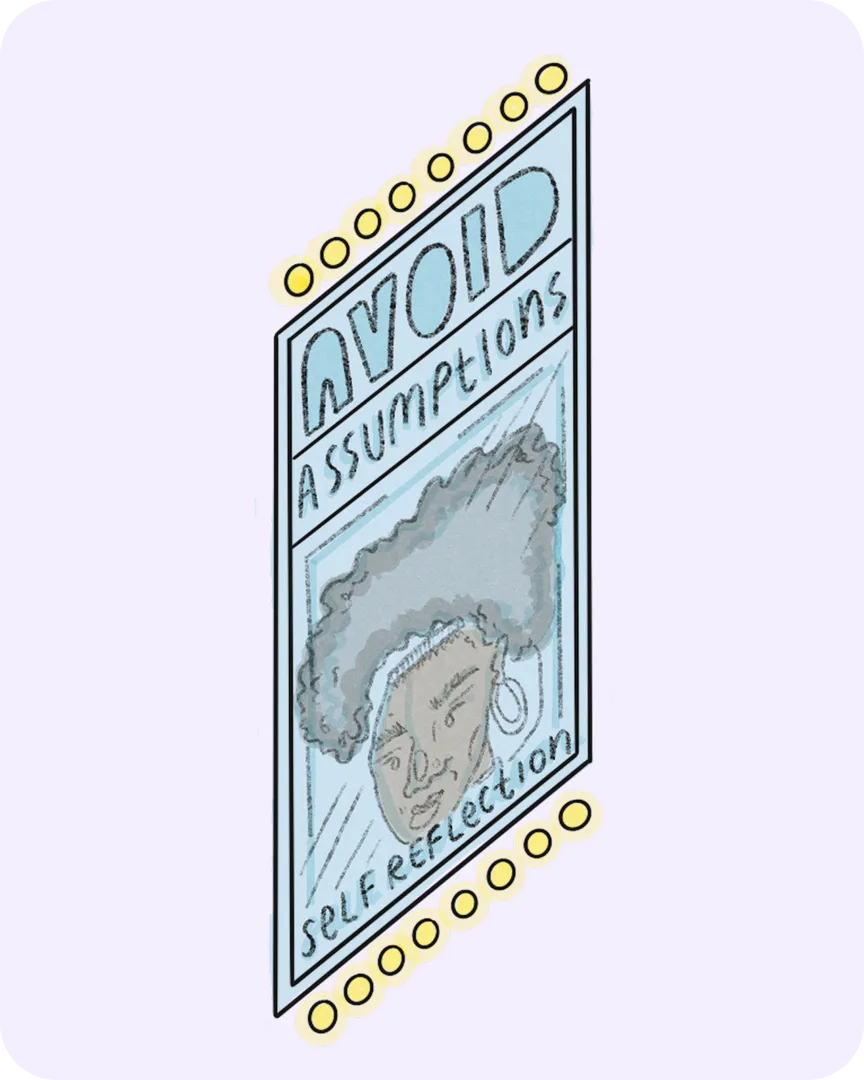
“When addressing a group of people, or speaking to or about a person whose pronouns you do not know, it’s best to use gender neutral language as it helps us not make assumption about a persons identity.”
Key Conversations: Gender-Inclusive Facilities
The most common question we get is ‘what do we do about toilets?’
It’s not surprising, as toilets are something all people use and need at a workplace or on set, and these facilities are often gender segregated. Other areas that are sometimes gender segregated include hair and make-up and costume trucks. Recent developments in the UK around the Supreme Court Ruling in April, 2025 have also led to confusion about legal status of gender-segregated facilities.
Below are some of the key things to think about when implementing gender-inclusive facilities in the workplace.
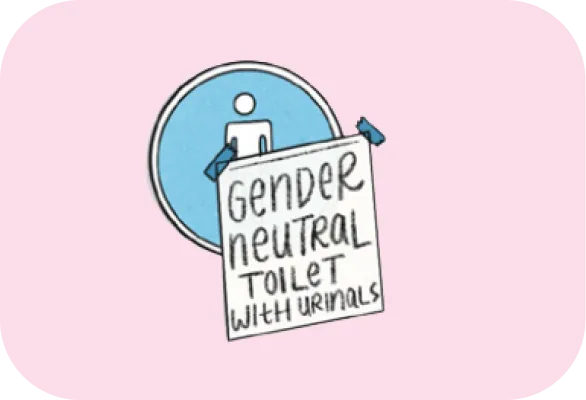
Disclaimer: The information in the Toolkit is for educational/advisory purposes only. It does not constitute legal advice. Specific professional advice should be sought if companies need assistance in the interpretation of or deployment of the content set out in the Toolkit.
Best Practice in Trans Inclusion
There are two approaches to gender-inclusive facilities that are recommended, each with their own pros and cons:
The most inclusive
- Provide gender-neutral toilets and changing options
- Ensure signage describes what facilities are inside the toilets – e.g., 3 x urinals, 3 x sanitary bins – instead of being signed as men’s/women’s
- This allows people to make their own decision on which facilities to access, rather than which gender they are
An acceptable option:
- Provide multiple options: men’s, women’s, gender-neutral and accessible
- Write ‘gender-diverse people welcome’ on the men’s and women’s signs to indicate that you support trans people’s safety on your set.
The legal situation
- The needs of all users should be considered when creating or reviewing toilet policies to avoid unfairly disadvantaging any individual or group, and there should be clarity about how access is provided.
- Facilities that are inclusive of trans women or trans men can generally be offered, rather than separating people according to sex assigned at birth. This approach helps avoid discrimination claims based on gender reassignment.
- Trans-inclusive policies may face discrimination claims from people based on sex assigned at birth. Whether such challenges succeed will depend on whether the policy is part of a fair and reasonable approach to providing suitable facilities for everyone.
- There is no legal requirement to provide single-sex toilets unless you are building a new building – in which case you must build single-sex toilets, or separate universal cubicles which include a washbasin and a lockable door.
Read the Good Law Project’s FAQ and guidance around
‘Trans inclusion after the Supreme Court decision’.

What are gender-neutral toilets?
Toilets that provide facilities for anyone to use. These are common in other parts of the world such as Canada and are more inclusive of families, gender-diverse people and, ideally, disabled people – where the facilities are made accessible.
That sounds weird!
Actually, they are used all the time; in our homes, in cafés and restaurants, on planes, at music festivals, etc.
But some people can’t use a urinal
Don’t worry about whether someone can or can’t use a urinal — if facilities are labelled with what’s available inside a toilet, people can then make that decision for themselves. Facilities might include things like:
– Urinals
– Cubicles
– Accessibility aids
– Sanitary bins
Common reactions
Below are some reactions you might come up against when implementing gender neutral toilets.
But isn’t sharing toilets unsafe for women?
This is a common conversation about toilets. Firstly, note the previous section – we already use gender-neutral toilets all the time.
Secondly, yes, absolutely. People are right to raise concerns about safety in public spaces. There are real threats to safety in the world, especially in public-private spaces like toilets and changing rooms, which need to be addressed. However, resistance should be shown to political narratives that – implicitly or explicitly – suggest it is the presence of trans people that elevates that threat.
Trans and non-binary people experience a huge amount of violence – and threat of violence – in spaces like toilets, especially if other people perceive us to use a toilet in which we are perceived ‘not to belong’ because of our gender.
Instead of pitting the safety of women and trans people against each other – and remember that some trans people are women! – conversations should focus on how to keep everyone safe from violence.
Secondly, yes, absolutely. People are right to raise concerns about safety in public spaces. There are real threats to safety in the world, especially in public-private spaces like toilets and changing rooms, which need to be addressed. However, resistance should be shown to political narratives that – implicitly or explicitly – suggest it is the presence of trans people that elevates that threat.
Trans and non-binary people experience a huge amount of violence – and threat of violence – in spaces like toilets, especially if other people perceive us to use a toilet in which we are perceived ‘not to belong’ because of our gender.
Instead …
But the location or office we’re in already has signs which are gendered…
Whilst many venues and offices will have gender-neutral toilets, you may find yourself in a venue or location which has gendered signs.
There’s an easy solution to this – print signs yourself to replace the gendered ones. These signs should simply state the facilities the toilets hold.
For example, in a toilet which has three cubicles each with sanitary bins, you could write:
“Toilet. Three private cubicles with sanitary bins”
See our example poster in the templates section.
There’s an easy solution to this – print signs yourself to replace the gendered ones. These signs should simply state the facilities the toilets hold.
For example, in a toilet which has three cubicles each with sanitary bins, you could write:
“Toilet. Three private cubicles with sanitary bins”
See our example poster in the templates section.
People/crew won’t understand why we have gender neutral toilets…
Then explain it to your team!
Most people want to respect and understand those around them. If gender-neutral toilets are explained, people will often understand and have no problem with them.
In production or the workplace, there often isn’t a lot of time. Work happens on tight deadlines and with limited budgets. But if the goal is to make everyone feel welcomed and safe at work, then practices need to change and adapt. Huge amounts of information are sent out on set daily – a memo explaining why gender-neutral toilets are important and signposting people to more information really shouldn’t take up that much time.
Most people want to respect and understand those around them. If gender-neutral toilets are explained, people will often understand and have no problem with them.
In production or the workplace, there often isn’t a lot of time. Work happens on tight deadlines and with limited budgets. But if the goal is to make everyone feel welcomed and safe at work, then practices need to change and adapt. Huge amounts of information are sent out on set daily – a memo explaining why gender-neutral toilets are important and signposting people to more information really shouldn’t take up that much time.
Understanding trans experience
Understanding trans experience
This section includes information and resources to help people in the film and TV industry learn about who trans people are and how we experience the world.
By the end of this section, you will understand why it’s important to support trans professionals in the screen industries.
It’s also a primer for people on crews and teams who’ve never encountered trans people before and have questions about who we are and why we need support.
We will cover:
What is gender, and what does it mean to be trans?
A glossary of some of the key terms and words you may have heard and wondered what the hell they mean.
Data and information on trans people’s experiences in the world and industry.
There are also handy print-outs in the templates section for you to put on sets and in offices to help your teams remember this information.
Transforming Film can provide consultancy around this area (and many others in this toolkit). If you would like further support, please contact us on info@transformingfilm.com
Gender 101
I’m confused, aren’t there just two sexes?
When we are born, medical professionals look at our bodies and categorise us into one of two sexes based on a set of biological traits linked to reproduction. At birth, this is usually based solely on the appearance of our genitalia; however, several other factors are also relevant in categorisation of human sex, including hormones, chromosomes, and internal reproductive organs.
There are many people whose bodies don’t neatly fit into the two sex categories of male and female. These people are called intersex. Sadly, because of social norms around binary sex, many intersex people have had operations performed on their bodies at birth (often without consent) to make them fit into one of the two categories on offer.
Further reading:
The New Science of Sex and Gender
Why the new science of sex & gender matters for everyone.
Sex Redefined: The Idea of 2 Sexes is Overly Simplistic
Biologists now think there is a larger spectrum than just binary female and male.
Okay… what’s that got to do with gender?
If sex is how our bodies are characterised, then gender is the expectations that people have of us because of our sex.
This is often thought about in terms of ‘masculinity’ and ‘femininity’.
Men are expected to be masculine, and women are expected to be feminine.
These expectations might include how we:
- dress: high heels, suits, hair bands, baggy clothes
- behave: cross our legs, burp, smile, make a mess
- express ourselves: accommodate people, cry, talk softly, take up space
In reality, all people are a mixture of masculine and feminine at any given moment, but we are measured by how manly/womanly/ladylike/boyish we are by others all the time.
However, it’s important to note that there is no universal expectation of masculine/feminine – the concepts are culturally and historically specific.
For example, how women are expected to behave and what is deemed feminine is different in the UK than it is in many other parts of the world. What is perceived as feminine is different in the UK in 2025 to how it was in 1523 when, for example, high heels were a ‘masculine’ item of clothing.
Further reading:
Why did men stop wearing high heels (BBC)
Oh, interesting. Tell me more…
Gender is complicated because it includes a lot of variables:
- How someone identifies
- How someone is perceived
- How someone expresses their gender
Okay, what’s all this got to do with trans people?
Some people identify with the gender expectations of their assigned sex at birth – we call them ‘cisgender’ – and some people don’t – we call them ‘transgender’.
Transgender people, or trans people for short, might identify with the other binary sex/gender than the one assigned at birth, or might identify as both, neither, or somewhere fluid in between.
You can’t always tell if someone is trans because:
- How someone identifies
- How someone is perceived
- How someone expresses their gender
…might all be different – a person might identify as non-binary, be perceived as a woman, and dress in a way that is androgynous. Another person might be a trans woman, be perceived as a woman, and dress in a way that is ‘butch’.
How do I know someone’s gender then?
You don’t!
The first thing to understand when you are working with trans and non-binary people is that you can’t tell someone’s gender identity by looking at them. Many trans and non-binary people have typically gendered names that might not match their gender identity. Just because you know someone’s name, don’t assume you know their gender identity.

Quick tip
Don’t assume someone’s gender from their presentation or their name.
How can I refer to them then? Should I just ignore them?
Absolutely not!
Don’t ignore people because you’re scared of getting it wrong! Until you know what someone’s gender is, just refer to them with gender-neutral words and pronouns (words used to refer to people in conversation, like she, he, or they). Non-binary people often prefer gender-neutral pronouns (they/them), so this has the added benefit of being inclusive too. For this reason, it’s good practice to be gender-neutral when addressing a group. For example, instead of saying ‘Ladies and Gentlemen’, which might exclude non-binary people in the crowd, use something neutral like: people, team, colleagues, esteemed guests…

Quick tip
Use gender neutral words and pronouns if you don’t know someone’s gender – for example – the pronoun they or just using someone’s name – or when referring to groups – words such as people, folks, or team.
But isn’t it weird to avoid someone’s gender?
Yes!
The last tip is meant to apply when you are talking to or about someone you don’t know very well, like a stranger on a film set or in the workplace. But it’s respectful to refer to someone with the correct pronouns when you know what those are!
Most people are more than happy to be asked what their pronouns are. Just be polite!
A helpful practice is for all people in a workplace or production to share their pronouns in meetings or email signatures – making it easier and less awkward for trans and non-binary people to share theirs.

Quick tip
Ask people’s pronouns (and offer your own). For example, at the start of meetings “Hi my name is Tom, my pronouns are he/him”.
Someone asked me to call them “they”? I’m so confused, “they” means a group of people, right?
Nope!
‘They’ can refer to a single person – we’ve been doing it through this whole section (take a look!).
We often refer to single people as ‘they’ when we don’t know their gender: ‘Oh, someone left their phone charger plugged in, I’m sure they’ll be back for it’.
Non-binary people often prefer the pronoun ‘they’ as it better reflects an identity that includes both binary genders, or neither, or somewhere in between.
It’s okay that it feels clunky to start using ‘they’ in this way. It’s an adjustment from common language – but making an effort goes a long way. It might feel difficult, but I assure you it’s much harder for a trans person to deal with the pain of being misgendered regularly.

Quick tip
Practice calling singular people “they” with other colleagues, so that you make less mistakes in front of trans and non-binary people.
Trans 101: Understanding Trans Experiences
This section aims to provide context and data around trans experience in our industry and wider society. There are a lot of stories about trans people in the press, but not much data, and this affects how we are perceived and treated in the world.
There isn’t much up-to-date data because few institutions or industries see it as important to understand the wider context and everyday realities of trans people.
The screen industries have a unique role to play as culture makers: to learn about the lives of trans people and support us as workers within the industry, and to tell informed and empowering trans stories in an increasingly hostile world.
Stats and Data
How many trans people are there in the UK?
It’s estimated around 1% of the UK population is trans – including non-binary people. In fact, the most recent census (2021) shows that 0.5% of the UK population recorded their gender identity as different from their sex assigned at birth.(source ↗).
In training sessions, there is often surprise at how small a percentage of the UK population is trans, due to how much coverage trans people receive in the UK press and further afield.
How many trans people work in the screen industries?
While trans people have always found a place on screen since the dawn of cinema, we now work in every aspect of the industry, from production assistants to cinematographers, sound mixers to stars.
According to Diamond: The Seventh Cut report, the proportion of on-screen contributions by those who identify as transgender or with an ‘other’ gender have increased over the past four years. The largest increase was for those who identify with an ‘other’ gender – rising from 0.2% in 2019/20 to 0.8% in 2022/23.
In 2022/23, trans people’s representation was slightly higher on-screen (0.8% of contributions) than population estimates (0.5% Census), with off-screen contributions (0.5%) matching population estimates precisely.
It’s important to remember that not everyone in the industry fills out the Diamond survey, and even for those who do, not everyone will feel comfortable disclosing sensitive information.
What are the realities of trans people in the UK?
There are a lot of stories about trans people in the press, but not much data.
When looking at the data that exists, the reality is that trans people are discriminated against in every area of public, private, and professional life.
According to reports from Stonewall in 2018:
In the workplace:
51%
Half of trans people have hidden their identity at work for fear of discrimination.
12%
One in eight trans employees have been physically attacked by colleagues or customers in the last year
In the home:
25%
A quarter of trans people have experienced homelessness.
48%
Almost half of trans people don’t feel comfortable using public toilets.
Violence:
41%
Two in five trans people (41%) and three in ten non-binary people (31%) have experienced a hate crime or
incident because of their gender identity in the last 12 months.
79%
Hate crime against trans people is significantly underreported; most trans people – four in five (79%) –
don’t report it to the police. Some trans people who report a hate crime don’t feel supported by the police or
experience even further discrimination.
Healthcare:
62%
Three in five trans people (62%) who have undergone, or are currently undergoing,medical intervention for
their transition are unsatisfied with the time it took to get an appointment.
41%
Two in five trans people (41%) said that healthcare staff lacked understanding of specific trans health needs when accessing general healthcare services in the last year.
Sources:
Stonewall Rainbow Britain Report: Attraction, Identity and Connection in Great Britain in 2022
LGBT in Britain – Trans Report (2018)
“Scepticism on transgender rights has increased across the board in the last two years, including among those groups typically more sympathetic to trans people”
YouGov Survey 2024/2025 (source ↗)
How about the news media cycle?
On top of this, we have now hit a new political period where trans people are being used as political pawns in culture wars and right-wing populist narratives.
According to a recent 2024/2025 YouGov survey:
“Scepticism on transgender rights has increased across the board in the last two years, including among those groups typically more sympathetic to trans people”.
Constant mainstream news media attacking trans people has had real consequences on our daily realities.
What’s this got to do with the screen industries?
The industry has a responsibility as culture makers.
It’s important that the industry understands this reality and doesn’t recreate trans-hostile press narratives. Being an industry that puts ideas and stories about trans people into the mainstream, it’s imperative to go above and beyond to tell trans stories well.
What do we do about this then?
1: Tell fuller and more humane trans stories
TV and film representations of trans people often show a limited range of stories about trans people. Some are deeply troubling:
• being trans is a ‘shocking reveal’ or a ‘big twist’ (Ace Ventura, The Crying Game, Naked Gun 33⅓)
• we are scary or dangerous, perhaps crazed killers (Silence of the Lambs, Nip/Tuck, CSI)
• we are victims and our lives are only bleak and traumatic (Boys Don’t Cry, The Danish Girl)
And some are two-dimensional and centre cis people’s perceptions of trans experience:
• a trans person returns to their hometown for the first time after transition (Monica, Close to You)
Read GLAAD’s analysis, ‘Victims or Villains: Examining Ten Years of Transgender Images on Television’.
These themes are not only deeply damaging to society’s general perceptions of trans people, portraying us as scary or fragile. These themes are also deeply damaging to trans people’s psyche, especially young trans people who start to believe this is the only possibility for their future.
It’s not that we shouldn’t tell true stories when these are traumatic, but that we should be mindful of the ecosystem of stories available for and about trans people.
“In Boys Don’t Cry, having Brandon Teena’s story of being murdered for being trans as the only representation of a trans man while growing up delayed my desire to transition for over a decade.“
Transphobia affects every aspect of a trans person’s life: healthcare, housing, employment, safety. As previously noted, there is a slightly higher than average percentage of trans people in the screen industries, so it’s an important industry for considering best practice and inclusion.
2. Support trans people in the industry
The screen sector needs a few people working on big industry-wide transformation, but many more working on small daily changes to make the workplace more welcoming and supportive of trans professionals. Consideration should be given not only to how to get more trans people into the industry, but also how to retain the trans professionals already working.
Solidarity not sympathy
In all of this, it’s important to remember trans people need solidarity, not sympathy.
Trans people are full humans with agency, and alongside the political and cultural narratives and debates about us, we’ve been building our own movements, and most people want to be alongside us – for example, the 2025 London Trans Pride became the biggest event of it’s kind with more than 100,00 attendees taking to the streets – led by trans people and with broad support.
Source: ‘Tens of thousands of people take to streets for London Trans+ Pride 2025’, The Guardian
Trans people are fighting back, and we need your support!
The section of our toolkit ‘Practical Tips’ offers loads of suggestions on how to make practical changes to support trans professionals and have a real impact in trans storytelling in the industry.
Definitions
One of the things people tend to be most scared of getting wrong is the language around being trans. This comes from a good place – wanting to respect people – and fearing that without sufficient knowledge, harm might be caused.
A glossary of key terms has been created (along with a printable poster for sets in the templates section) to help people learn and remember.
But here are the top three tips on language:
- It’s okay that you don’t know everything. Most trans people will appreciate that you’re trying, as long as you’re respectful. Acknowledging that you aren’t sure what the right language is and being open to learning will go a long way!
- Our community has a lot of words and acronyms. Trans people struggle to keep up at times too. This glossary will probably be out of date in two years. That’s the beauty and struggle of the world evolving around us. Forgive yourself. Then keep trying.
- There’s a difference between personal preference and best practice.
Like any community, we don’t all agree. There are words that some trans people use to refer to themselves that other trans people find offensive. Try to keep up with best practice in speaking about trans people generally, but respect an individual’s right to choose the words used to refer to themselves. For example, ‘transsexual’ is a term considered outdated and offensive to many in the community in the 21st century. Do not use this term to refer to trans people in a general sense. However, there are some trans individuals who still use this term to refer to themselves – respect that choice and refer to them that way if asked.
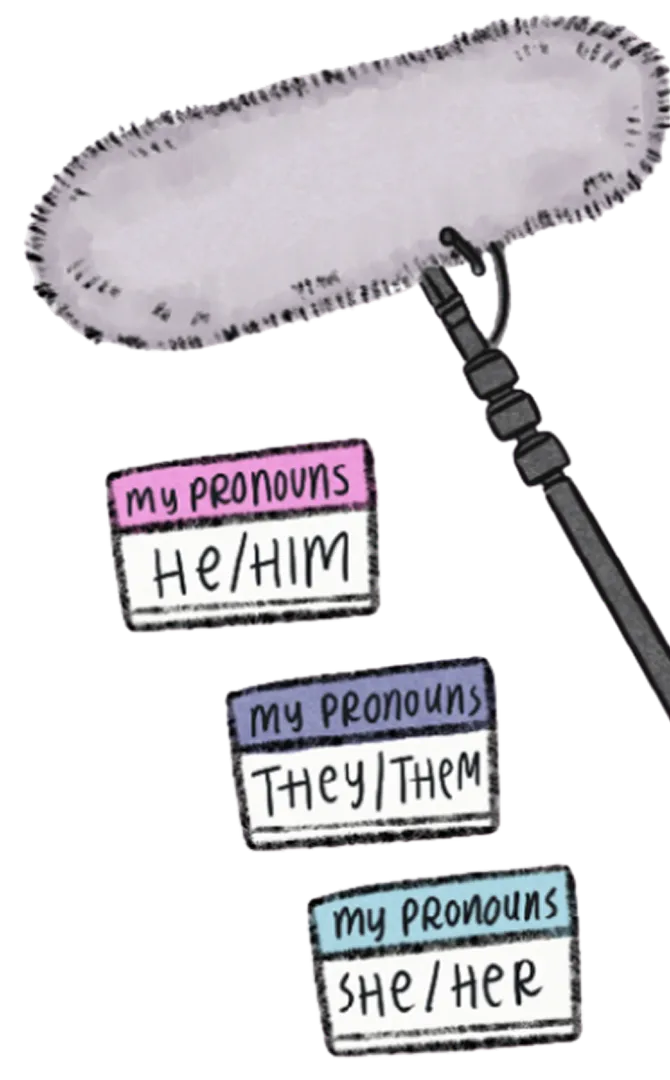
Assigned at birth
This refers to the sex a doctor decided we are at birth by looking at our genitals. A trans woman was usually assigned male at birth and has transitioned or is in the process of transitioning to be a woman; a trans man was usually assigned female at birth and has transitioned or is in the process of transitioning to be a man. You might hear these referred to as AMAB (assigned male at birth) or AFAB (assigned female at birth).
Not everyone fits into these two categories.
It is not respectful to ask a trans person if they are AMAB/AFAB or to refer to a trans person by how they were assigned at birth.
Trans, transgender
The prefix ‘trans-’ comes from Latin meaning ‘across’, ‘on the other side of’, and ‘beyond’.
Transgender is the umbrella term to refer to people whose gender identity is different to the sex assigned to us at birth (that means, when the doctor looked at our genitals – what sex the doctor decided we are).
There are several trans identities and experiences that sit within that umbrella, including words you might hear like non-binary, transsexual, agender, and genderqueer. There are a lot of words and identities under the umbrella, all with very specific meanings, which some trans people like and some don’t. It’s best to say ‘trans’ as default and avoid using other terms unless someone specifically tells you to refer to them in another way.
Other words you might hear that describe people in the trans umbrella: trans man, trans woman, trans masculine, trans feminine, transsexual, non-binary, genderfluid, gender non-conforming, agender, genderqueer…
Trans man
A man who has transitioned or is transitioning away from the sex assigned to him at birth. He may or may not have had surgeries or taken hormones to make his body more male. A trans person’s identity isn’t based on whether they’ve had or will have medical interventions.
Trans woman
A woman who has transitioned or is transitioning away from the sex assigned to her at birth. She may or may not have had surgeries or taken hormones to make her body more female.
Cisgender, cis
To be cis or cisgender is, at its simplest, to not be trans. The prefix “cis-“ comes from Latin and means “on this side of”, the prefix “trans-“ means “on the other side of”. Therefore, when people use the term cis or cisgender in conversations about gender they are talking about people who are “on this side of” the gender identity expected from the sex they were assigned at birth.
LGBTQIA+
This acronym stands for lesbian, gay, bisexual, trans, queer, intersex, asexual, and the ‘+’ represents the multiple additional sexualities and gender identities not included within these six categories. It is used to refer collectively to people who face prejudice in society because of their sexuality or gender.
Non-binary
This is an umbrella term for referring to people who either identify with both or neither of the binary gender categories of ‘man’ or ‘woman’. Non-binary people may or may not be trans. Often, non-binary people use ‘they/them’ pronouns.
Many gender-diverse experiences outside of western culture would also fit into this definition but have their own culturally specific identities and experiences, such as Hijra in South Asia or Two-Spirit in indigenous North American culture.
Genderqueer
An example of an identity within the non-binary umbrella – someone who ‘queers’ gender. Not all non-binary people identify as genderqueer; it is a specific identity in itself.
Intersex
Intersex is a term used to describe individuals born with sex characteristics – including chromosomes, hormones, and reproductive anatomy – that do not fit typical definitions of male or female. It’s an umbrella term encompassing a wide range of variations in sex traits and is not a disorder, disease, or condition. Intersex variations can be apparent at birth or develop later in life.
Gender non-conforming
This term (or GNC for short) is used as an umbrella term to refer to people whose gender presentation (either in behaviour or appearance) does not match the expected gender presentation of their perceived sex. Most of us are gender non-conforming many times throughout a single day. However, because one of the ways that gender is policed in everyday life is how people are perceived physically, some people whether trans or cis, face harassment, abuse and violence for being gender non-conforming. In addition to trans people, this might include e.g. butch women, men who dress in clothes perceived as “feminine”, non-binary people.
Gender affirmation
Gender affirmation is the experience of feeling good in our gender. It could be social affirmation: people respecting our names and pronouns, or telling us we look ‘handsome’ instead of ‘pretty’ (or vice versa). It could also be physical – wearing clothes that make our bodies look as we want. A trans-inclusive set seeks to affirm the gender of its trans professionals. Although it’s important to note that, as we all experience gender differently, trans people may have different experiences of what is affirming.
Gender dysphoria
Gender dysphoria is a term used to refer to how a trans person might feel distressed or disconnected from our bodies because of how we look, feel, or are read by other people. This can lead to significant distress and impact daily life. It can be a constant feeling we have about ourselves, or triggered by a comment or experience – for example, how an item of clothing fits us that doesn’t align with our gender.
Misgender
This is when a trans person is referred to by the wrong pronoun (he/she/they). This might happen when talking to or about the person. See our section on ‘Key Conversations: Making a Mistake’ for tips on what to do if you misgender someone. Usually, this is accidental, although it’s worth noting that constant or intentional misgendering will be very painful for a trans person and can often constitute harassment and bullying.
Deadname
A deadname is the birth name of a trans person that is no longer used after legally or socially transitioning. It’s considered harmful to use a person’s deadname, even unintentionally. You should never disclose a person’s deadname to others, and doing so could breach the law. If a person changes their name, legally or socially, while working on your project, then you should do everything you can to ensure that everyone on the production consistently uses their new name. While mistakes may happen, constant or intentional deadnaming could be distressing for a trans person and could constitute harassment and bullying.
Transmisogny
Transmisogyny recognises that trans women and transfeminine individuals often face prejudice and discrimination due to both their transgender identity (transphobia) and their gender expression, which is often perceived as feminine (misogyny).
Cis gaze
The cis gaze refers to the way that trans people are depicted in media through the lens of an assumed cis audience. Usually this means that we are portrayed for cis people’s entertainment, scrutiny, or education (you may have heard of the white gaze or the male gaze, to denote a similar issue in how Black people and people of colour are depicted, and how women are depicted respectively).
Pronouns
Pronouns are the words we use to refer to other people when we are talking about them e.g. he, she, they. We often say things like “she’s over there”, or “he’s on his way” or “They left their bag behind”. They project gender onto the person we are talking about. Pronouns are really important to trans folks because they are how the world shows they see, respect and care about a persons gender identity.

Resources
Resources
For trans professionals working in the screen industries
Trans On Screen ↗
Trans+ On Screen is a directory representing trans, non-binary and gender non-conforming professionals in all areas of Film and TV, from (pre-) production to distribution.
Trans Creative Collective ↗
The Trans+ Creative Collective (TCC) is a community set up by, and for Trans+ creators and allies to connect with one another in a safe and inclusive environment.
Galop – Trans Privacy Law ↗
An information sheet by Galop answering questions about legal protections for the privacy of trans people and your rights if you have given your information to services.
Queer Filmmakers Network ↗
QFN aims to connect, support and champion LGBTQIA+ Filmmakers, through networking, events, screenings and peer support.
The Film & TV Charity ↗
Although not trans specific, the Film & TV Charity are an independent charity for everyone behind the scenes in film, TV and cinema, offering a 24hour helpline, mental health support as well as financial
and legal support/advice.
Support & Helplines
Gendered Intelligence
For those over 18, Gendered Intelligence have a Support Line: 0800 640 8046, as well as support via Whatsapp on 07592 650 496 or by email on supportline@genderedintelligence.co.uk ↗
(Opening times: Monday 12-5pm; Tuesday 2-7pm; Wednesday 10-3pm; Thursday 12-5pm; Friday 10-3pm)
Mermaids
For those under 18, please reach out to Mermaids Support Line, (Monday – Friday, 1pm – 8:30pm) on 0808 801 0400. If you need support over a bank holiday or outside of the above support lines opening hours please see Switchboard LGBT+
Switchboard LGBT+
(Every day, 10am-10pm) on 08000 119100.
For those under 18, you can text MERMAIDS to 85258 for 24/7 mental health support from Shout.
For trans experience and supporting trans folk
Stats on trans lives in the UK ↗
Stonewall
Understanding non-binary people ↗
Trans Equality
What does it mean to be cisgender? ↗
The Conversation
How to use gender neutral words ↗
Teen Vogue
Legal: Guide to gender neutral drafting ↗
Transgender 101: A guide
Everyday Feminism
Understanding the trans community ↗
The Human Rights Campaign
Podcasts
Gender Reveal
Tuck Woodstock and Ozzy Llinas Goodman
Available wherever you get your podcasts
One From The Vaults (Morgan M Paige)
Available on Apple podcasts
New Economics Podcast: Trans Liberation ↗
New Economics Podcast conversation with Nim Ralph and Ayeisha Thomas-Smith
Lights Out, BBC Sounds — episode: Kaleidoscope ↗
Laverne Cox on Transgender Representation, Advocacy, and the Power of Love Unlocking Us with Brené Brown ↗
Corpses, Fools, and Monsters: the History and Future of Trans Cinema, by Caden Mark Gardner and Willow Catelyn McKay
Trans Cinema, by Caden Mark Gardner and Willow Catelyn McKay. Watching Classics Movies with K Cruver
TV & Film
For a better industry for all: apps & other resources
Practice With Pronoun
Website which similar to duolingo for language allows you to practice which pronouns to use.
Callit app
Anonymous app which allows staff of companies and productions to call bad behaviour out.
Brazen Productions
Brazen Productions have brilliant resources on their website including: Adjustment and Access Passport template, Easy Read Pre-Production Schedule, Easy-Read Callsheets.
Templates
Useful templates
A series of templates are available for reference. They can be shared amongst your colleagues, used on productions, and/or printed out and put up.
Unit list with pronouns included
Trans inclusive set sign: Understanding gender neutral toilets
Trans inclusive set sign: Examples of gender neutral language
Trans inclusive set sign: What to do if you misgender someone
About the toolkit
About Transforming Film
Who are we?
Transforming Film was founded in 2019 to provide training, consultancy and advocacy around trans experience and identity for the screen industries.
The organisation is co-run by activist and trainer Nim Ralph (they/them) and cis producer Cat Marshall (she/her). Nim and Cat met on the feature film Everybody’s Talking About Jamie after Nim came onboard the production to advise on gender
identity and created a toolkit covering; basic understanding of gender identity, understanding LGBTQ experience and practical ways to ensure trans and non-binary folk feel welcome, safe and supported.
After Everybody’s Talking About Jamie, Nim and Cat wanted to build on this work and Transforming Film was born.
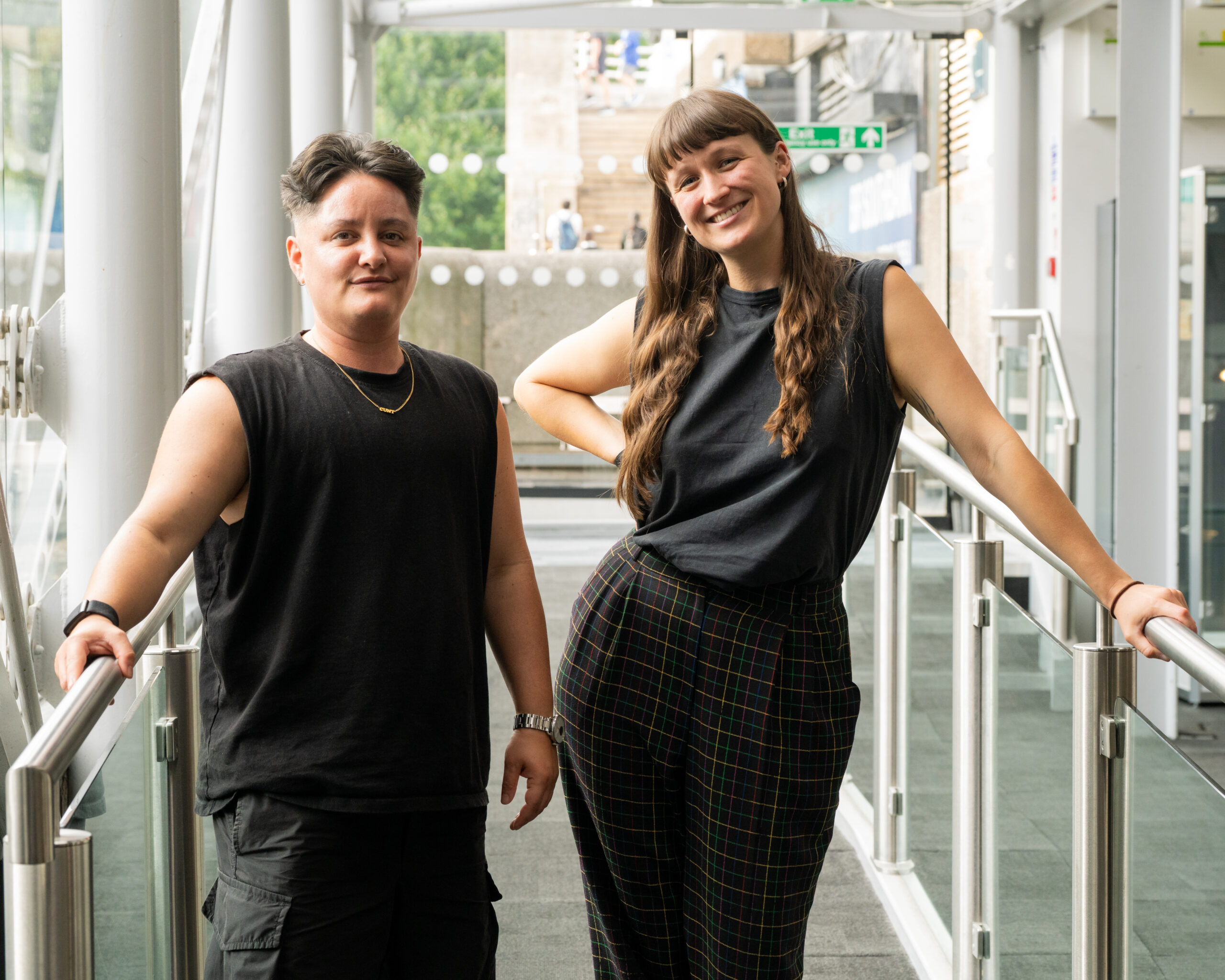
Our experience
With Nim’s training background, they lead on content, training, and consulting, while Cat’s work as producer sets her up to focus on industry questions, admin, and logistics.
We want more trans people to be hired and recognised for their contributions in the industry – this is a guiding principle of our partnership.
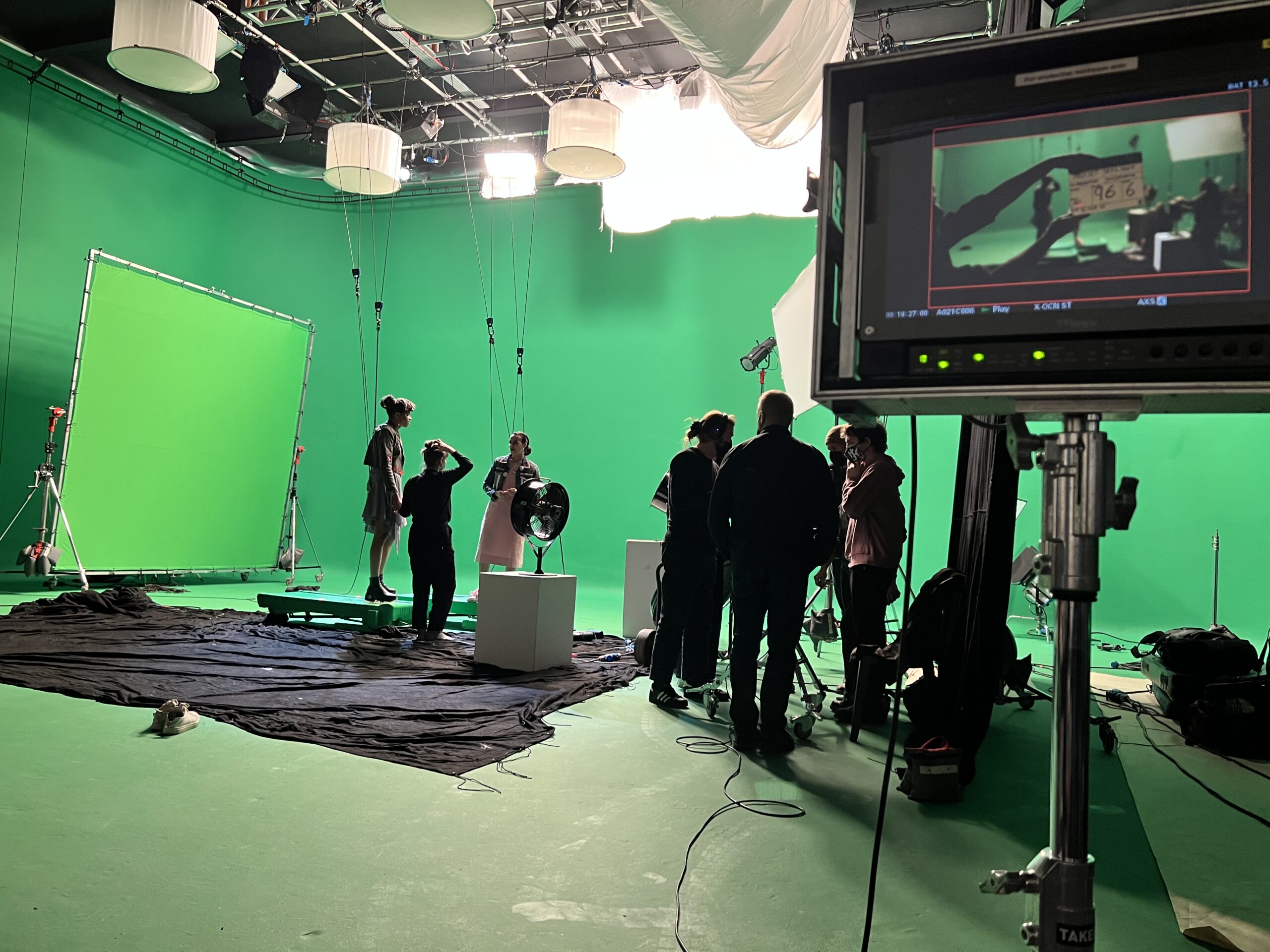
Found this toolkit useful? / Using it on your production?
Please credit our work, when using our templates and advice.
And please consider supporting our work and contributing to a better industry for all, by donating to
Transforming Film
Feedback
We would love to hear your thoughts on the toolkit and hope this will be an evolving document, so if you have feedback on the guidance or have a suggested update, please do get in touch!
Training, Consultancy and Advocacy Services
Transforming Film offers training, consultancy and advocacy around trans identity and experience for the screen industries. If you would like to enquire about these services please do contact us via
info@transformingfilm.com
Sign up to hear our news!
Join our mailing list to hear about upcoming training, updates to the toolkit, events and news from us
Thank you to our supporters!
This toolkit is the product of five years work and wouldn’t have been possible without the generous support of our industry partners.


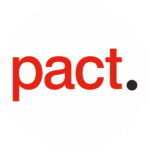

Thank you’s & Credits
- This toolkit has been created by Nim Ralph and Cat Marshall at Transforming Film
- Illustrations by Tamara-Jade Kaz – www.tamarajadekaz.co.uk
Copy Editor: Lukas Berredo - A big thank you to our Content Reviewers: Max Disgrace, Morgan M Page, Helios Blanc and Amy Coop
© Copyright Nim Ralph & Cat Marshall / Transforming Film July 2025
Disclaimer: The information in the Toolkit is for educational/advisory purposes only. It does not constitute legal advice. Specific professional advice should be sought if production companies need assistance in the interpretation of or deployment of the content set out in the Toolki
